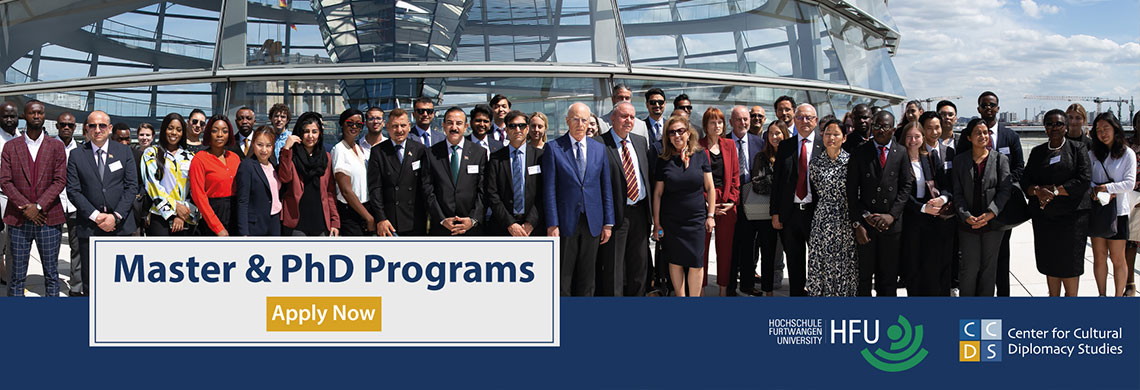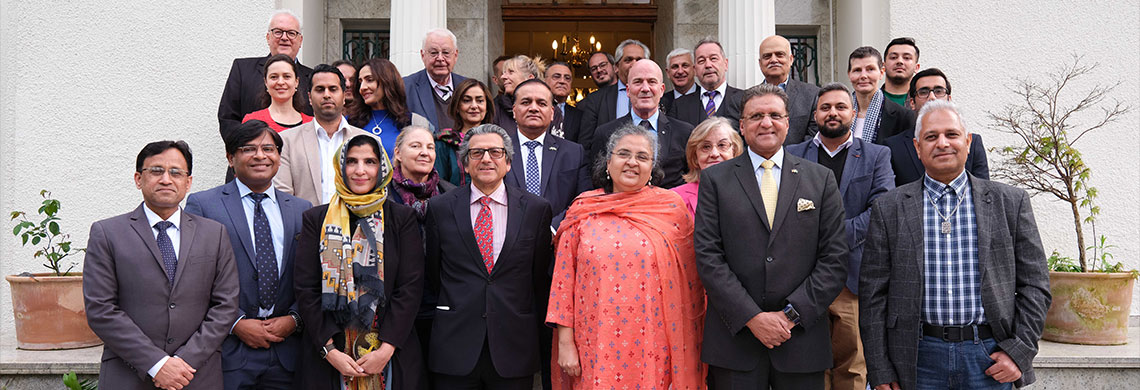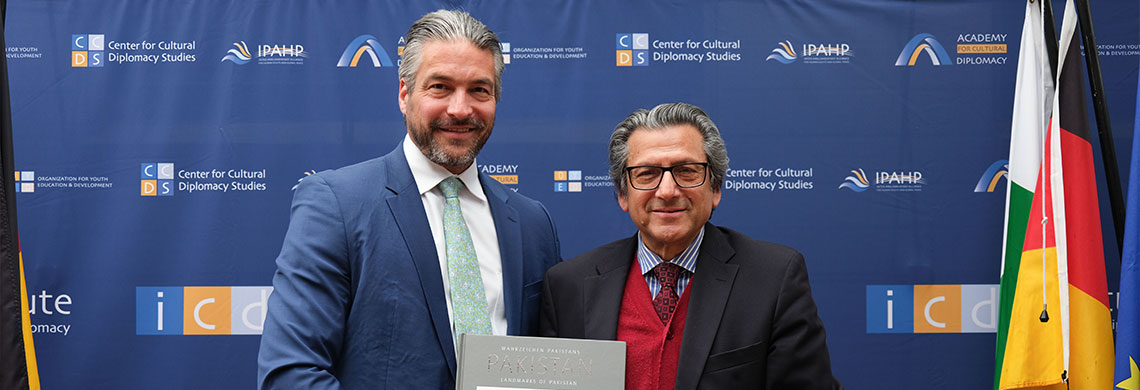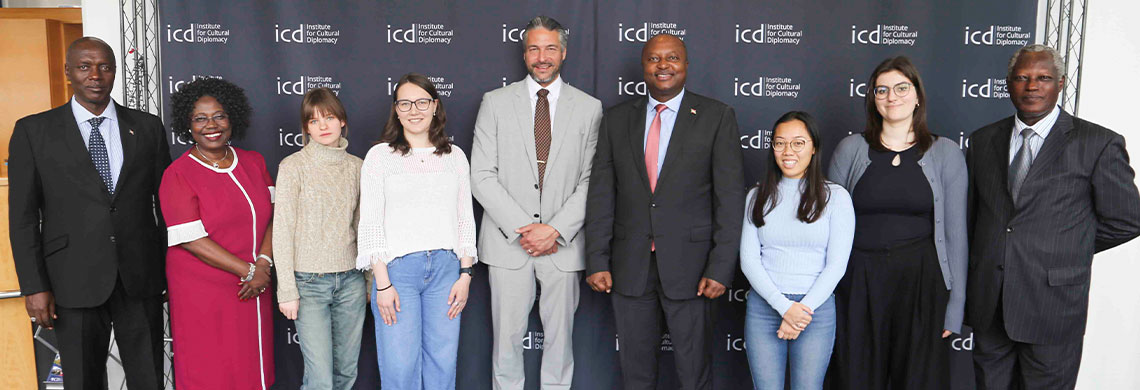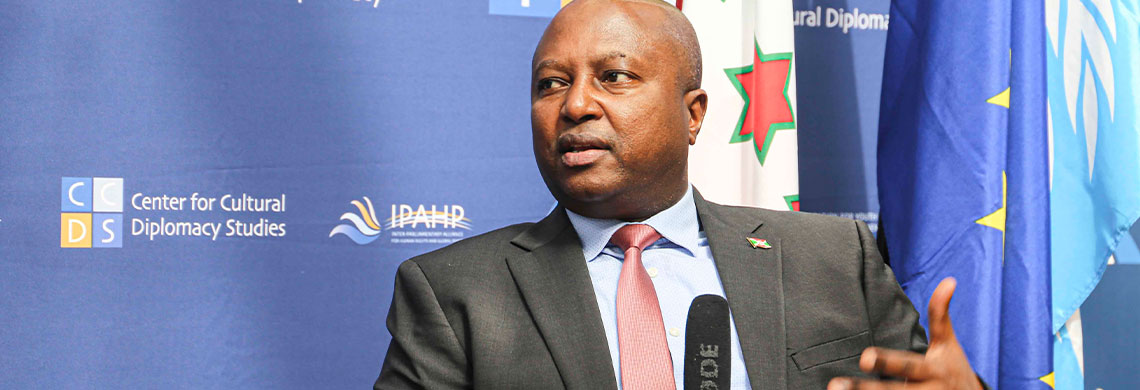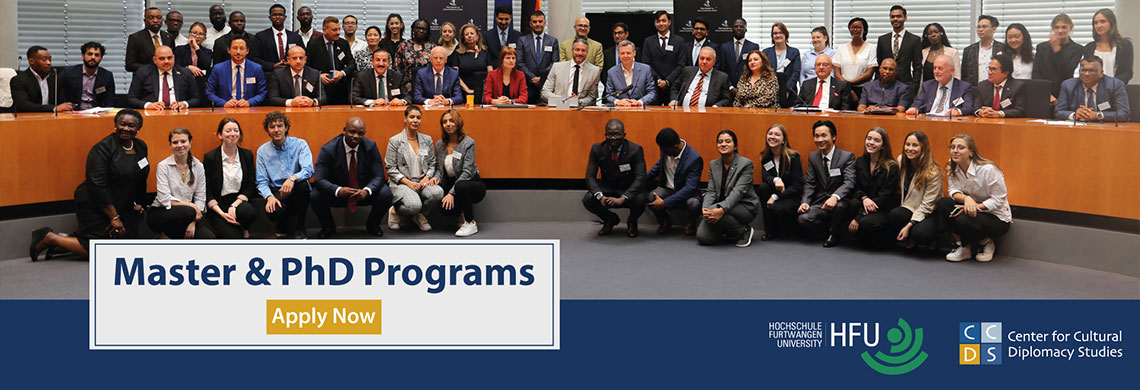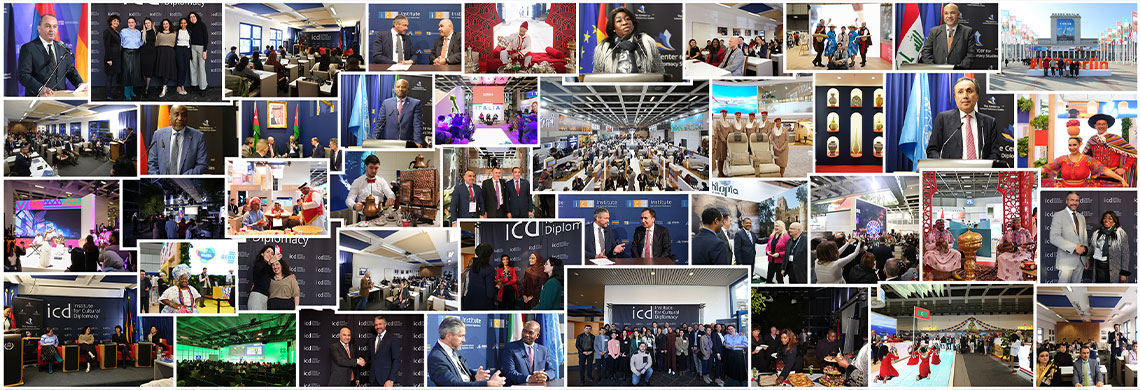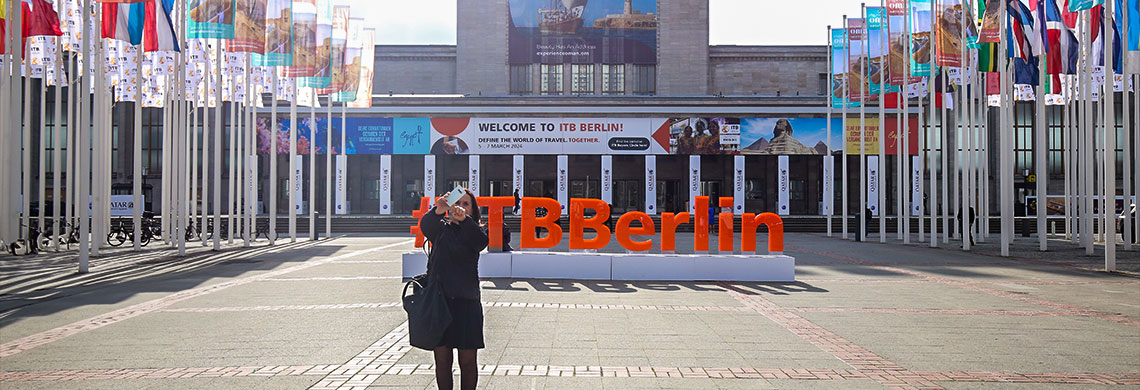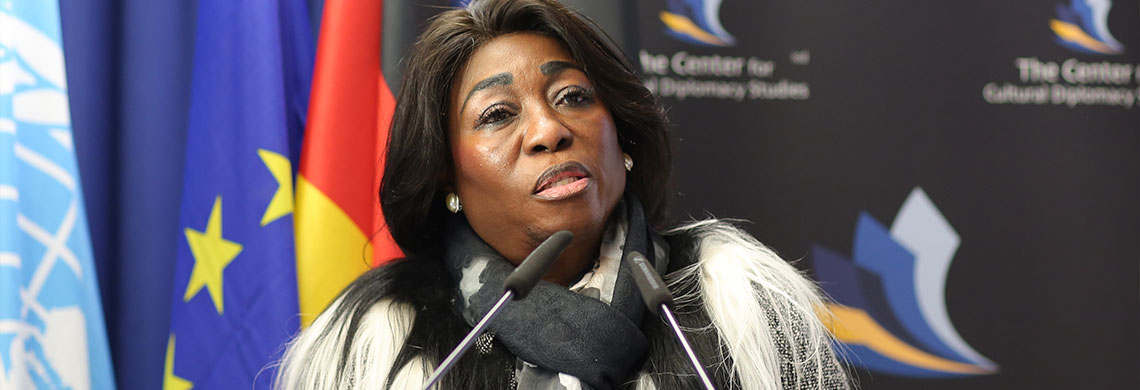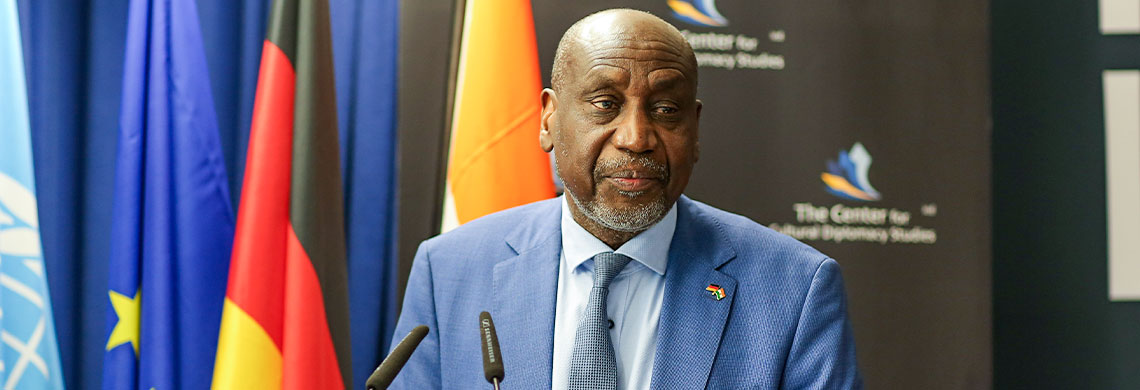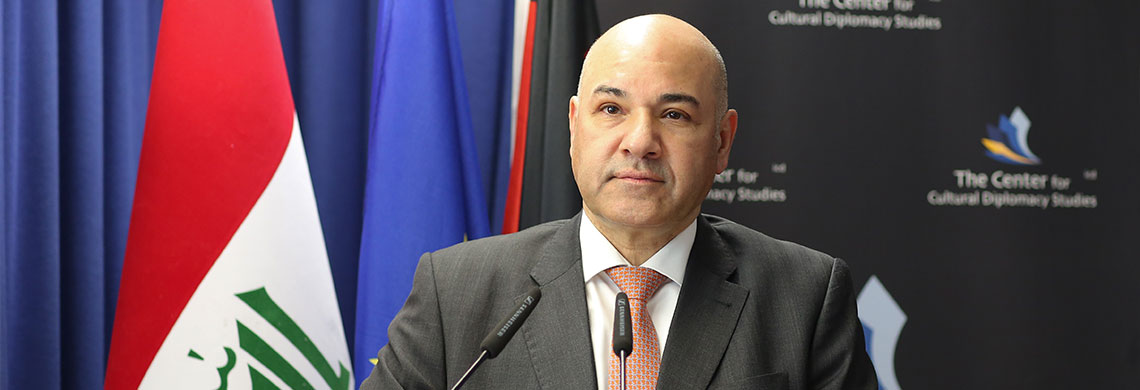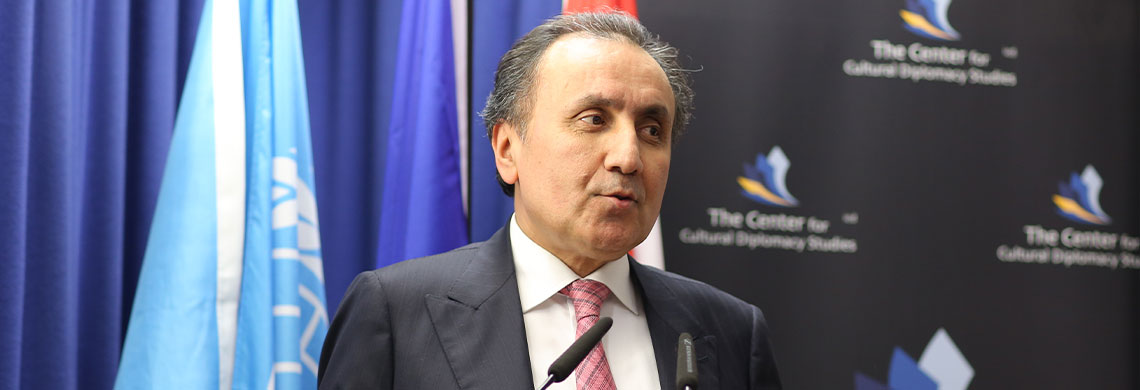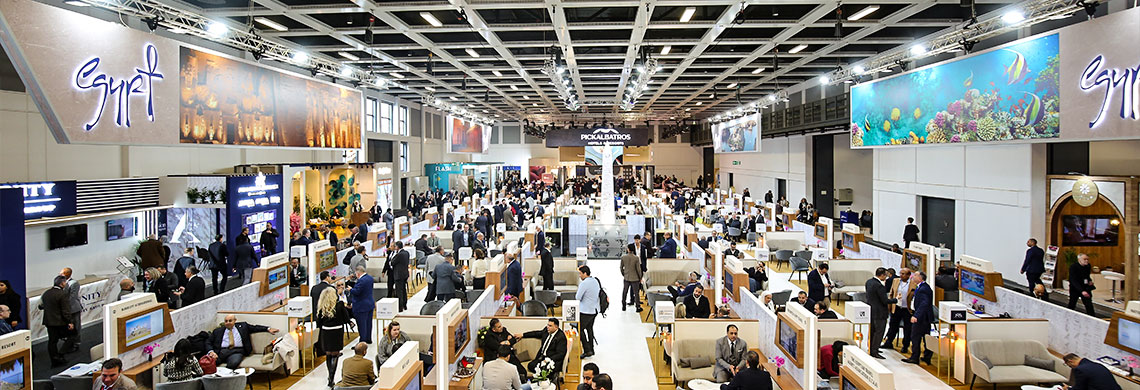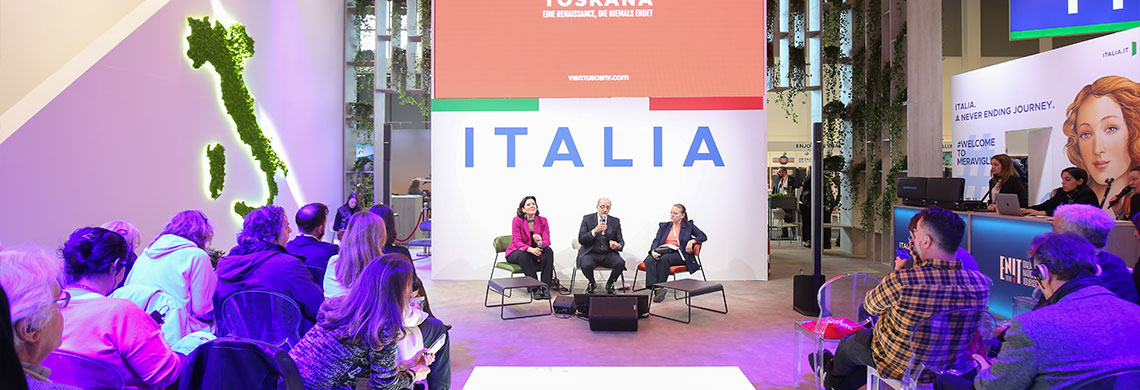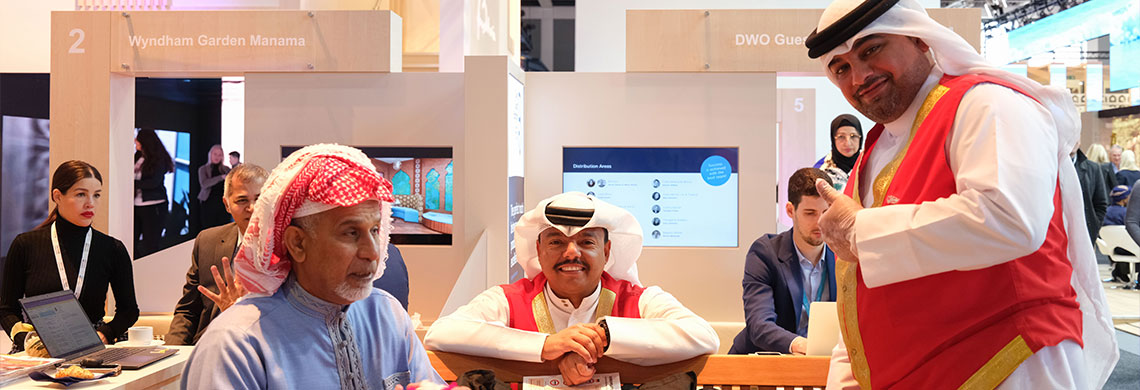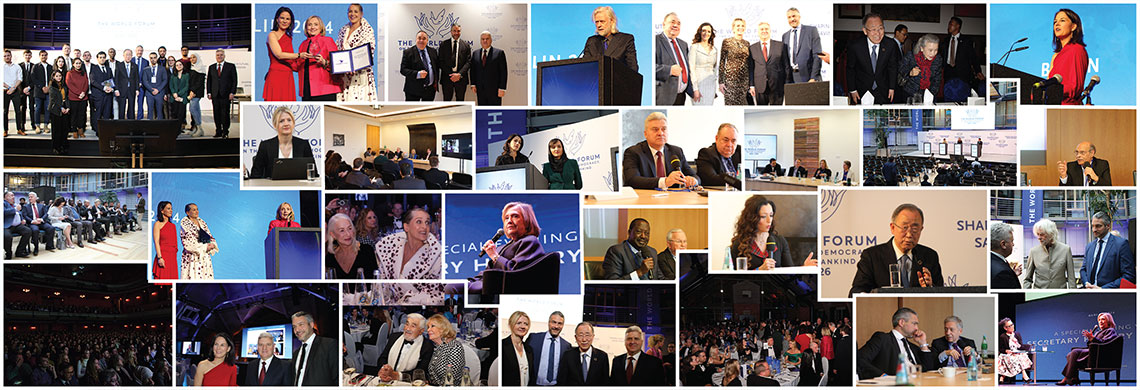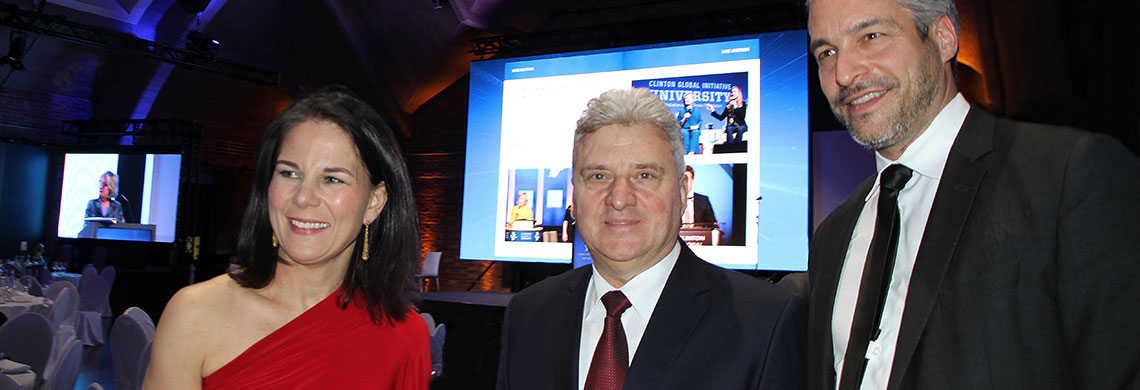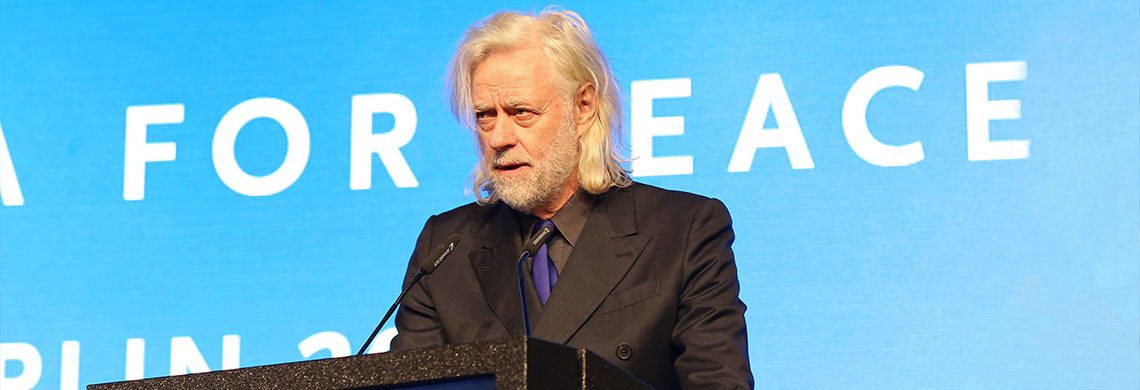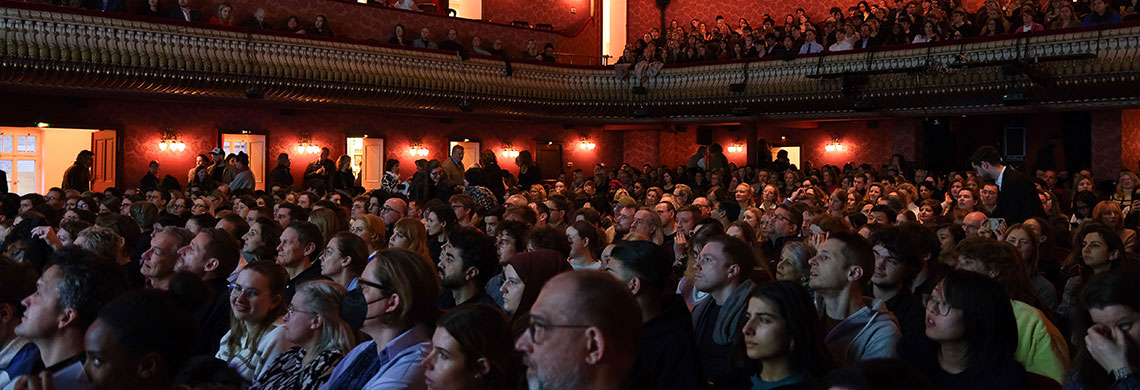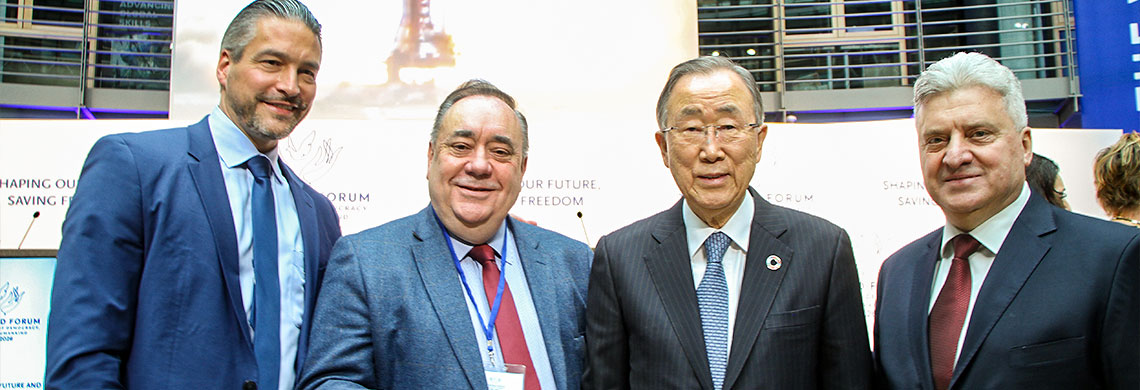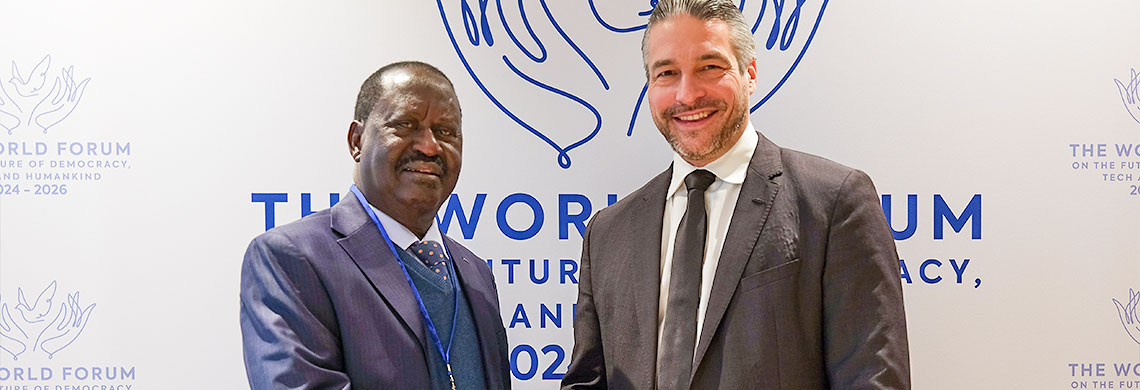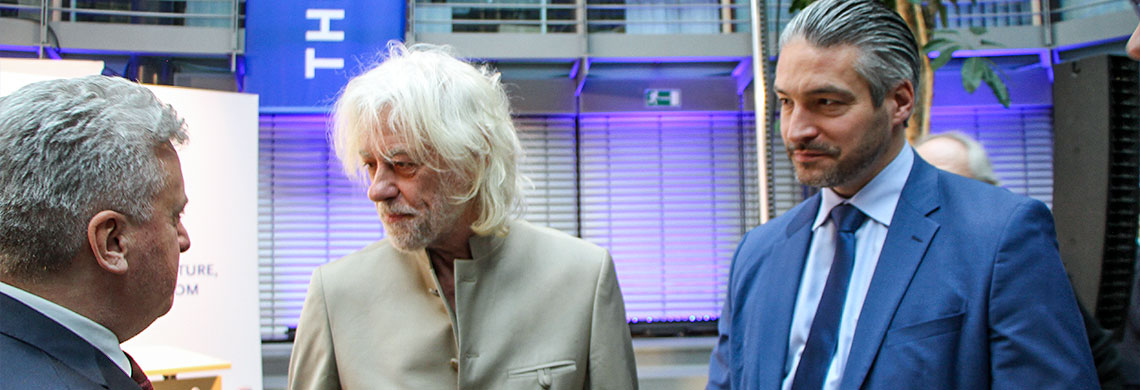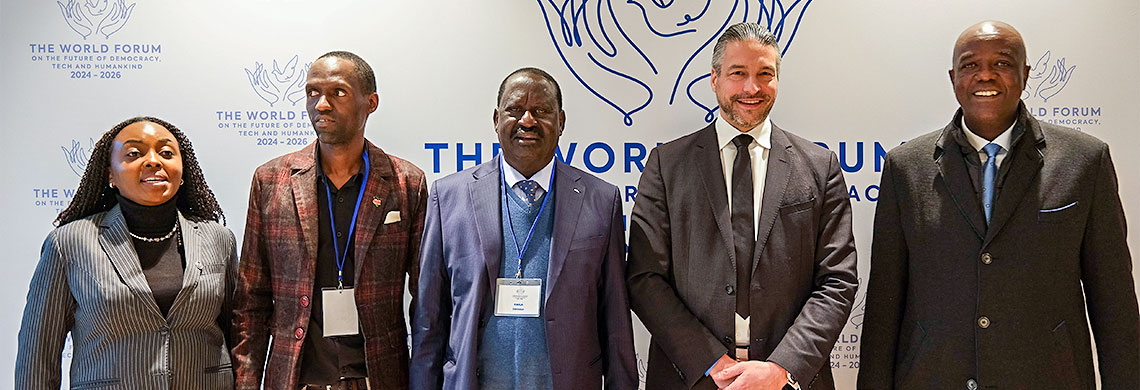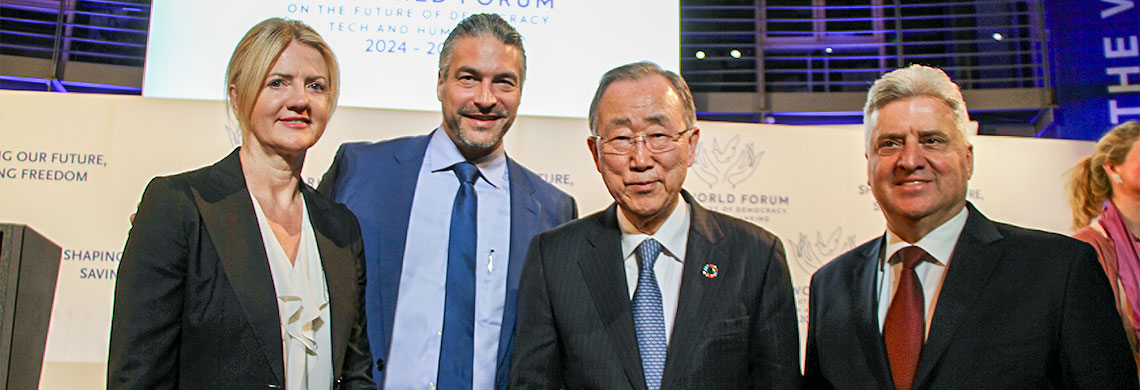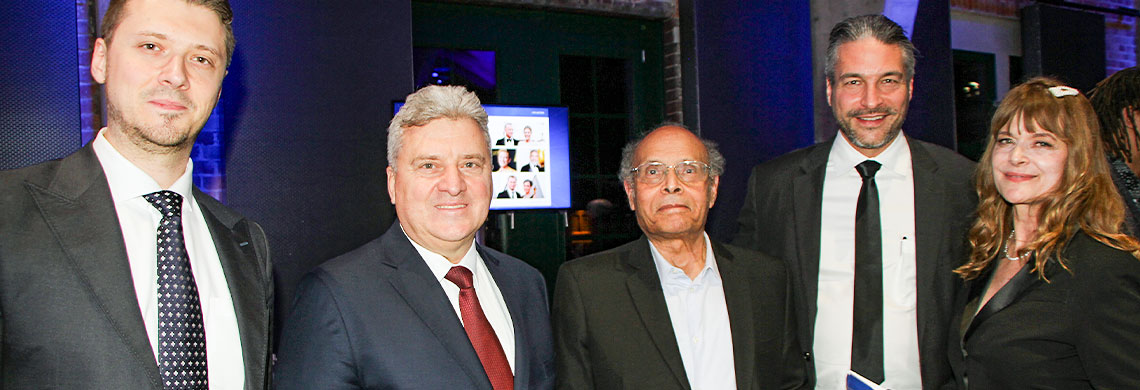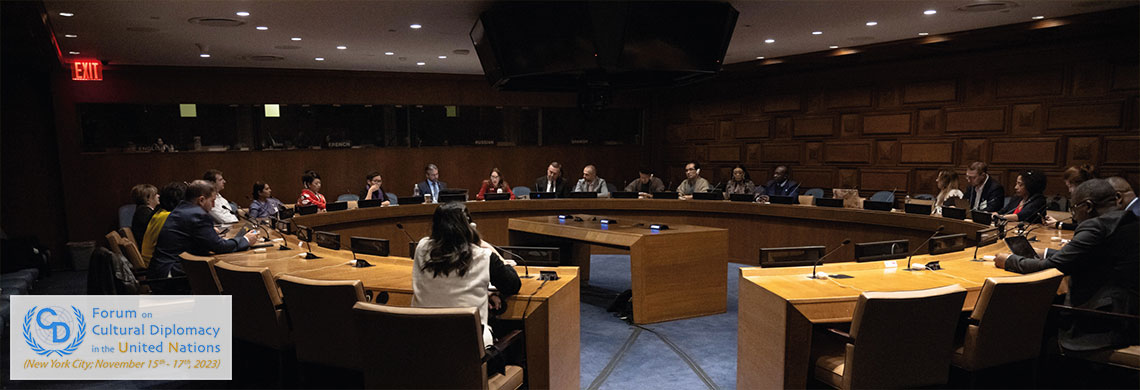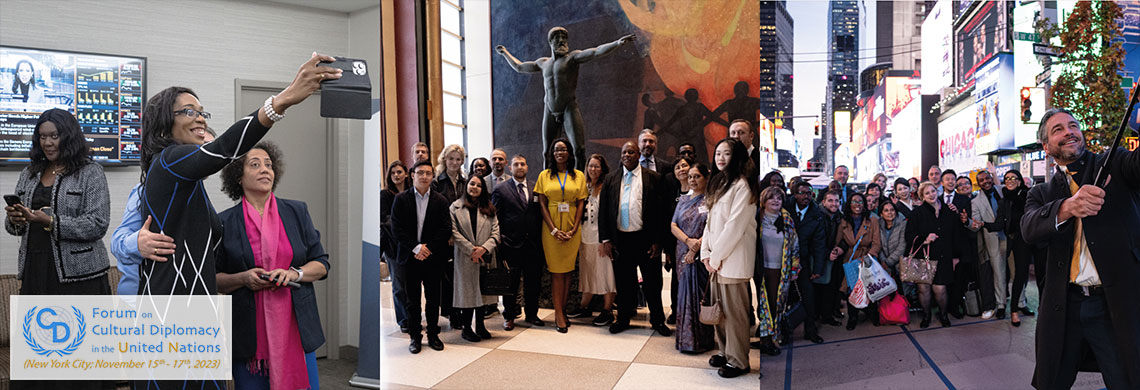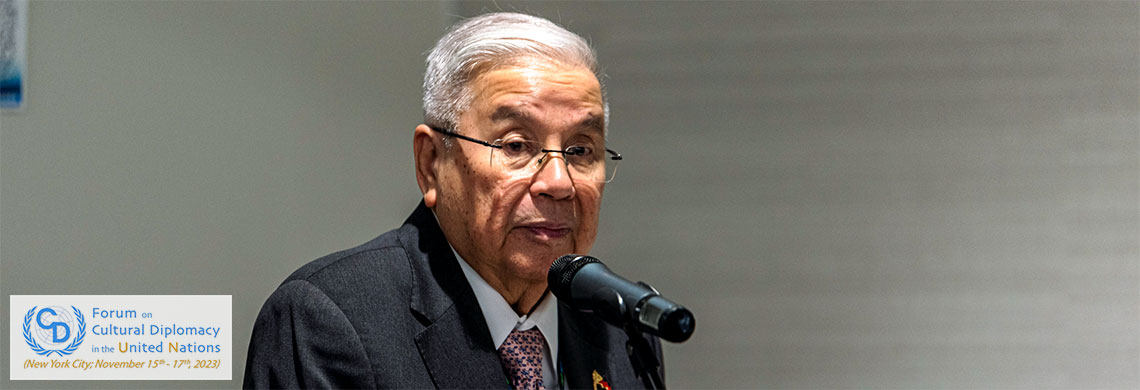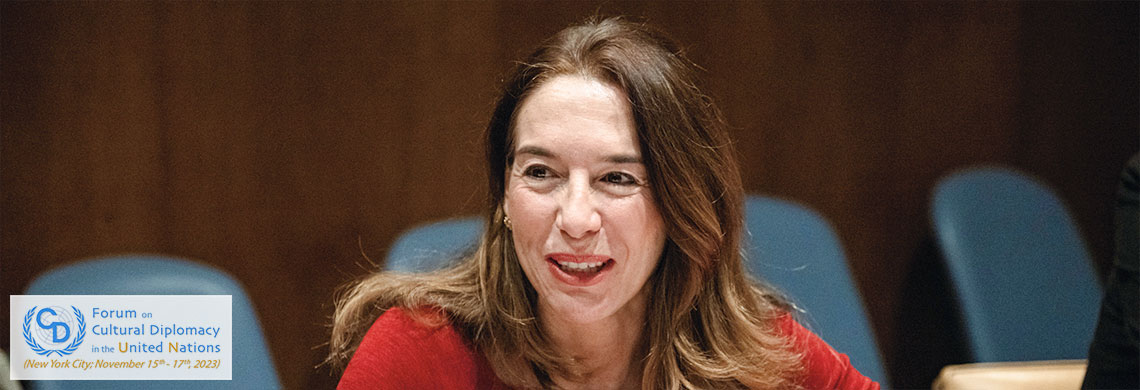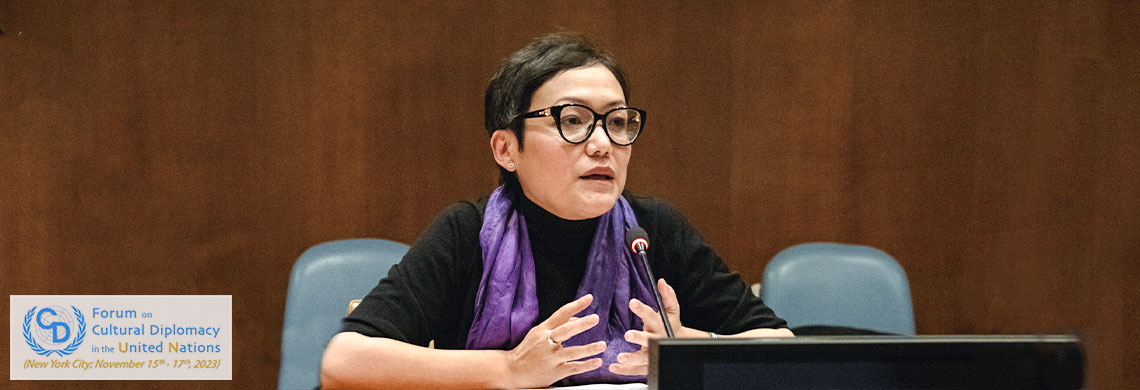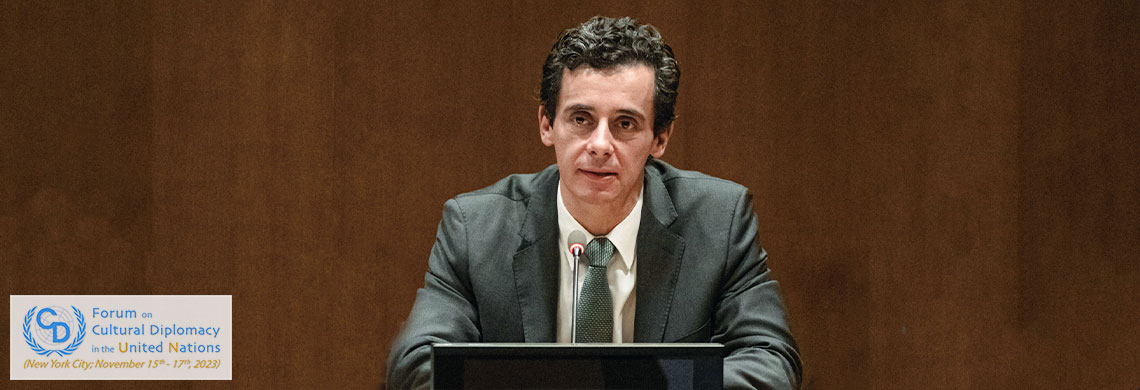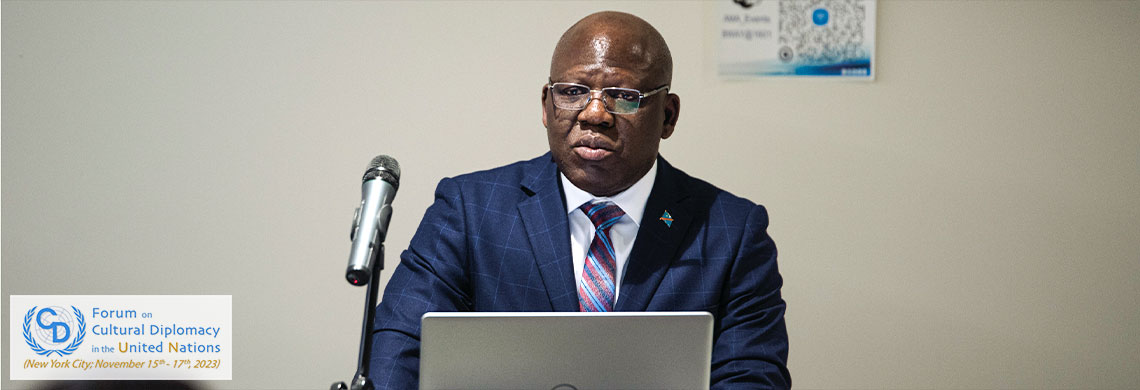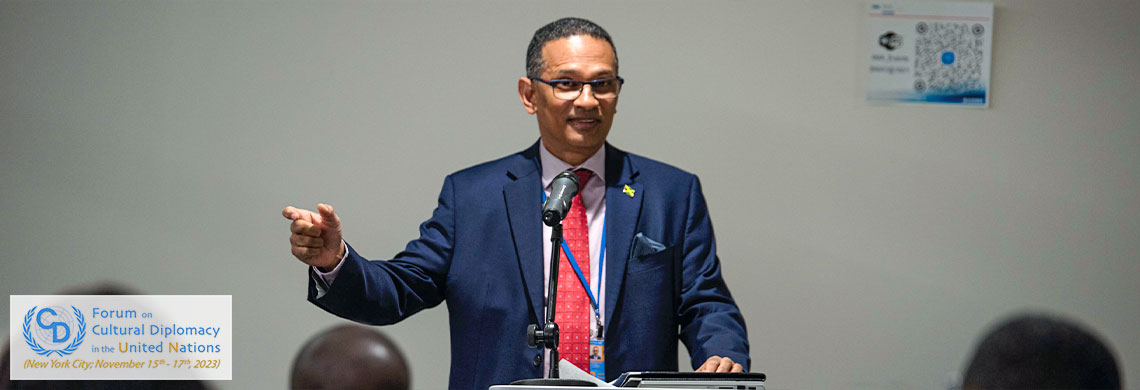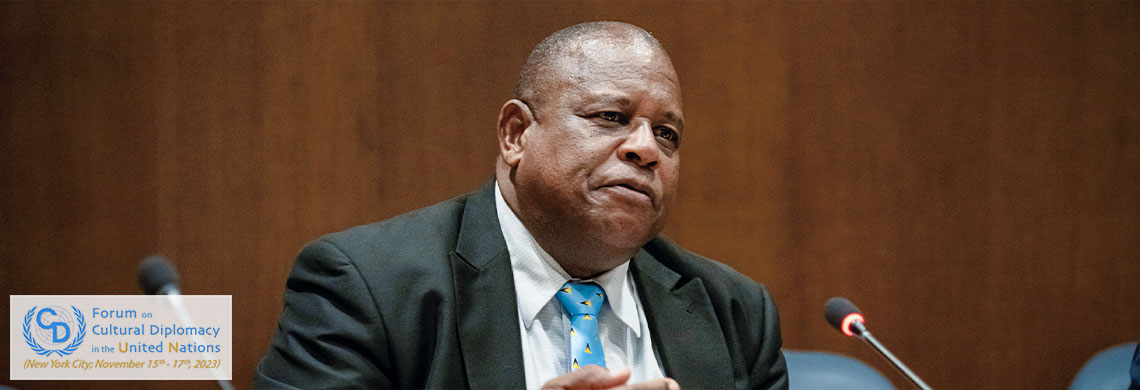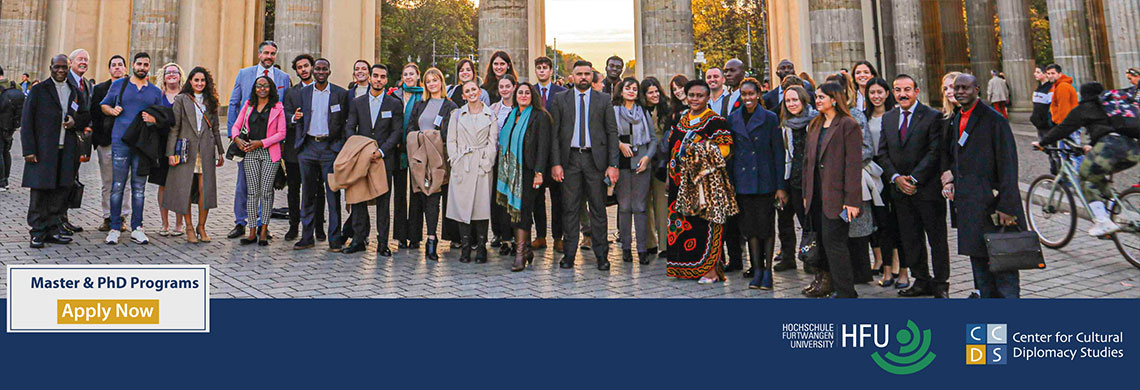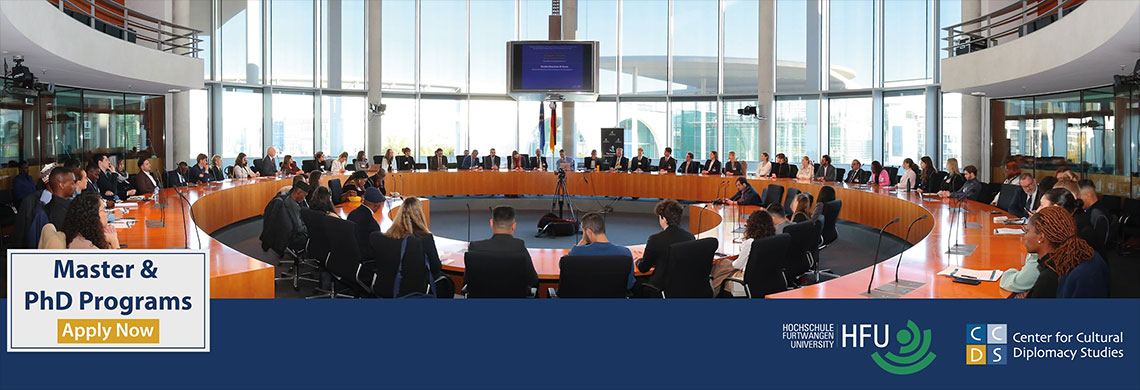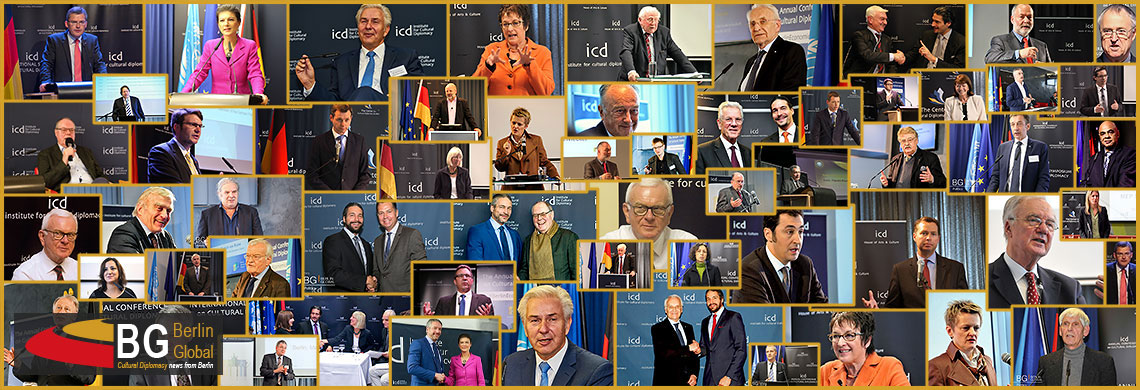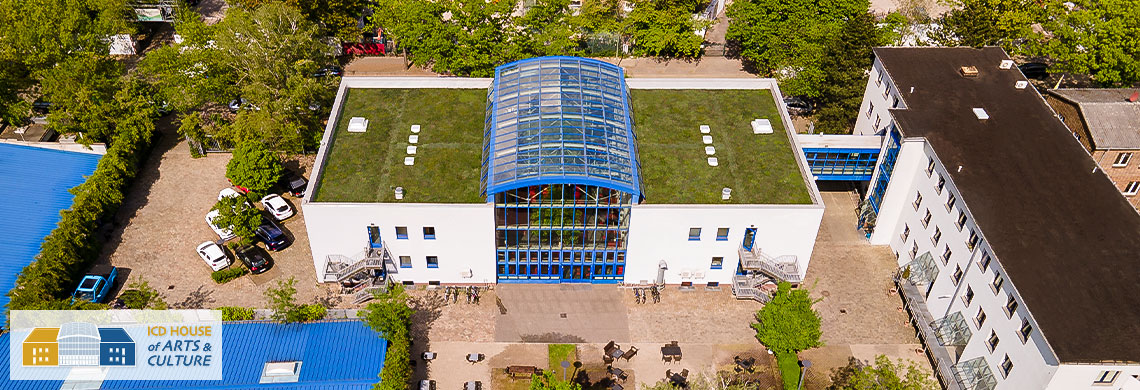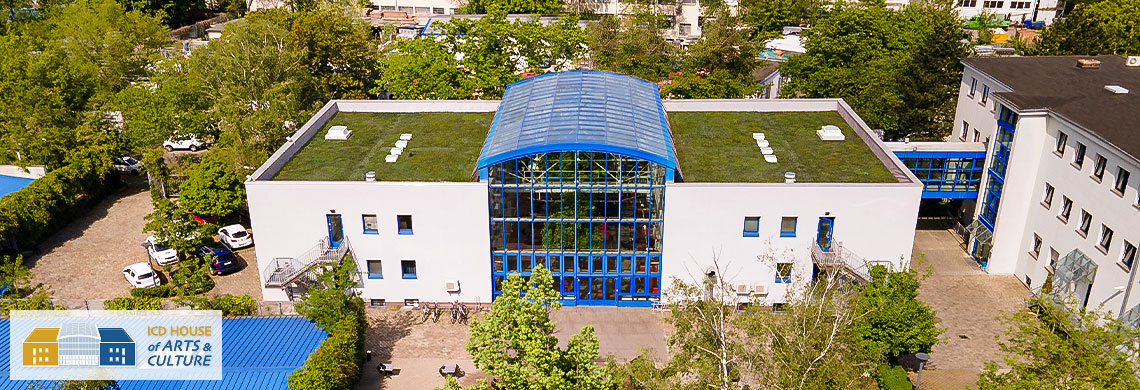Academy for Cultural Diplomacy
Cultural Diplomacy Research
Monuments and Sculptures as Cultural Diplomacy
The field of Cultural Diplomacy has been highlighted and exemplified by a number of world-renowned monuments and sculptures, which physically symbolize for many people around the world cultural diplomacy at its best. These monuments have deep significance for the cultures that created them, the cultures that received them as well as the many cultures around the world that experience and share in their importance and significance.Below you will find a selection of examples of such renowned cultural diplomacy monuments and sculptures from around the world:
-
2560 BC
GREAT PYRAMID OF GEZA
One of the Seven Wonders of the Ancient World
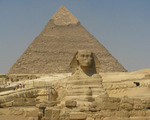 The Great Pyramid of Giza was constructed approximately between 2560–2540 BC in honour of the Egyptian king Khufu, and is thought to have been intended as his tomb. Even into the 19th century it remained the tallest building in the world, 147 metres, and it comprised of about 2.3 million stone blocks, weighing 2.5-15 tons each. This remarkable piece of engineering is the only one of the so-called ‘Seven Wonders of the ancient World’ to remain in tact, and has stood as an icon for ancient Egyptian culture for thousands of years. In addition, it continues to attract great numbers of people to explore contemporary, as well as ancient, Egyptian culture. Some controversy and disagreement remains over the precise purpose of the pyramid to ancient Egyptian culture, and how it was built, and has inspired countless experts and investigators from around the world for centuries. It demonstrates how collective marvel at a wonder of supreme significance to ancient culture and engineering may bring different cultures together to investigate the people and behaviours of the past.
The Great Pyramid of Giza was constructed approximately between 2560–2540 BC in honour of the Egyptian king Khufu, and is thought to have been intended as his tomb. Even into the 19th century it remained the tallest building in the world, 147 metres, and it comprised of about 2.3 million stone blocks, weighing 2.5-15 tons each. This remarkable piece of engineering is the only one of the so-called ‘Seven Wonders of the ancient World’ to remain in tact, and has stood as an icon for ancient Egyptian culture for thousands of years. In addition, it continues to attract great numbers of people to explore contemporary, as well as ancient, Egyptian culture. Some controversy and disagreement remains over the precise purpose of the pyramid to ancient Egyptian culture, and how it was built, and has inspired countless experts and investigators from around the world for centuries. It demonstrates how collective marvel at a wonder of supreme significance to ancient culture and engineering may bring different cultures together to investigate the people and behaviours of the past.

-
2000 BC
THE KAABA
The Sacred House of Allah
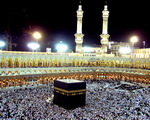 There is no place on Earth as venerated, as central or as holy to as many people as Mecca. By any objective standard, this valley in the Hijaz region of Saudi Arabia is the most celebrated place on Earth. Millions of homes are adorned with pictures of it, and over a billion Muslims turn in its direction in prayer five times a day. Twenty four hours a day, thousands of people circle the Kaaba, the most sacred point within the most sacred mosque in the Muslim religion – Al-Masjid al-Haram (English: The Sacred Mosque). It is stated in the Qur’an that the Kaaba was the first house built for humanity to worship Allah. One of the Five Pillars of Islam requires every Muslim to perform the Hajj pilgrimage to the Kaaba. It is a mandatory religious duty for Muslims, which must be carried out at least once in the lifetime of every adult Muslim who is physically and financially capable of undertaking the journey, with the caveat that they can support their family during their absence. However, the Kaaba is not merely a foundation stone of Muslim cultural heritage; it is a real and present symbol that connects all Muslims across the globe and one that is unique in its power to emote and to unite persons irrespective of their geographical or financial situation.
There is no place on Earth as venerated, as central or as holy to as many people as Mecca. By any objective standard, this valley in the Hijaz region of Saudi Arabia is the most celebrated place on Earth. Millions of homes are adorned with pictures of it, and over a billion Muslims turn in its direction in prayer five times a day. Twenty four hours a day, thousands of people circle the Kaaba, the most sacred point within the most sacred mosque in the Muslim religion – Al-Masjid al-Haram (English: The Sacred Mosque). It is stated in the Qur’an that the Kaaba was the first house built for humanity to worship Allah. One of the Five Pillars of Islam requires every Muslim to perform the Hajj pilgrimage to the Kaaba. It is a mandatory religious duty for Muslims, which must be carried out at least once in the lifetime of every adult Muslim who is physically and financially capable of undertaking the journey, with the caveat that they can support their family during their absence. However, the Kaaba is not merely a foundation stone of Muslim cultural heritage; it is a real and present symbol that connects all Muslims across the globe and one that is unique in its power to emote and to unite persons irrespective of their geographical or financial situation.

-
C. 495BC – 429BC
ACROPOLIS OF ATHENS
The Preeminent Monument on the European Cultural Heritage
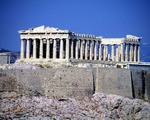 The Acropolis is the site of four of the greatest masterpieces of classical Greek civilization – the Parthenon, the Propylaea, the Erechtheum, and the Temple of Athena Nike. Built in the 5th century BC, it constitutes an artistic achievement of staggering size and quality; a distillation of what the first Greek democracy could produce, and a testament to human capability and creativity. The Acropolis of Athens is situated on a high rocky outcrop above the city, and has a highly unique symbolic and cultural value, symbolizing democracy and indeed the beginning of Western civilization. The Parthenon, the most well-known of the monuments in the Acropolis, was dedicated to Athena Parthenos, the patron goddess of the city of Athens and goddess of wisdom, and today represents one of the most tangible links to classical Greek civilization and the classical spirit. The monuments were constructed at a time when thought and the arts were flourishing, as an extraordinary group of artists – under the tutelage of the sculptor Pheidias – put into effect the ambitious plans of Athenian statesman Pericles. In 1986, the inaugural Olympic Games were staged in Athens, as Ancient Greece was the birthplace of the concept of the Olympic Games. Thus, the Acropolis should be viewed as the rightful home of the greatest example of cultural diplomacy in the sporting world.
The Acropolis is the site of four of the greatest masterpieces of classical Greek civilization – the Parthenon, the Propylaea, the Erechtheum, and the Temple of Athena Nike. Built in the 5th century BC, it constitutes an artistic achievement of staggering size and quality; a distillation of what the first Greek democracy could produce, and a testament to human capability and creativity. The Acropolis of Athens is situated on a high rocky outcrop above the city, and has a highly unique symbolic and cultural value, symbolizing democracy and indeed the beginning of Western civilization. The Parthenon, the most well-known of the monuments in the Acropolis, was dedicated to Athena Parthenos, the patron goddess of the city of Athens and goddess of wisdom, and today represents one of the most tangible links to classical Greek civilization and the classical spirit. The monuments were constructed at a time when thought and the arts were flourishing, as an extraordinary group of artists – under the tutelage of the sculptor Pheidias – put into effect the ambitious plans of Athenian statesman Pericles. In 1986, the inaugural Olympic Games were staged in Athens, as Ancient Greece was the birthplace of the concept of the Olympic Games. Thus, the Acropolis should be viewed as the rightful home of the greatest example of cultural diplomacy in the sporting world.

-
220BC – 206BC
THE GREAT WALL OF CHINA
One of the Greatest Wonders of the World
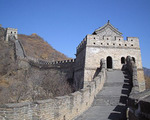 The Great Wall of China is an enduring bastion of Chinese culture and strength. Originally conceived by Emperor Qin Shi Huang (c. 259-210 B.C.), construction of the best preserved portion of the wall was undertaken during the Ming Dynasty (1368-1644 AD). However, construction of the rest of the wall started as early of 220 BC. Designed to defend China from invasion, ultimately unsuccessful, it nevertheless posed a very real psychological barrier to potential invaders and had symbolic might. These days its significance is cultural rather than military and demonstrates the vast capabilities of Chinese civilisations of the past and how that shapes modern day China, rather than portraying current military might. Thousands upon thousands of tourists visit the Great Wall every year as it, among other famous Chinese monuments, continues to represent a gateway into understanding the history and culture of the region. In other words, interestingly, a throughly military construction of the past now serves to unite people of different backgrounds in greater understanding of their historical and contemporary cultures.
The Great Wall of China is an enduring bastion of Chinese culture and strength. Originally conceived by Emperor Qin Shi Huang (c. 259-210 B.C.), construction of the best preserved portion of the wall was undertaken during the Ming Dynasty (1368-1644 AD). However, construction of the rest of the wall started as early of 220 BC. Designed to defend China from invasion, ultimately unsuccessful, it nevertheless posed a very real psychological barrier to potential invaders and had symbolic might. These days its significance is cultural rather than military and demonstrates the vast capabilities of Chinese civilisations of the past and how that shapes modern day China, rather than portraying current military might. Thousands upon thousands of tourists visit the Great Wall every year as it, among other famous Chinese monuments, continues to represent a gateway into understanding the history and culture of the region. In other words, interestingly, a throughly military construction of the past now serves to unite people of different backgrounds in greater understanding of their historical and contemporary cultures.

-
196 BC
ROSETTA STONE
A Valuable Key to the Decipherment of Hieroglyphs
 The inscription on the Rosetta Stone is a decree passed by a council of priests on behalf of Ptolemy V on the first anniversary of his coronation. This decree is inscribed on the stone three times, in hieroglyphic (for important or religious documents), demotic (the common script of Egypt) and Greek (the language of Egyptian rulers at the time). The significance of this decree, written three times, is monumental. Thomas Young, an English physicist was the first to find that there was a pattern to these three inscriptions. He discovered that some of the hieroglyphs wrote the sounds of a royal name: Ptolemy. Jean-François Champollion, a French scholar, soon found that the hieroglyphs recorded the sound of the Egyptian language. This has been a hugely important discovery in the history of etymology and is a fantastic example of cultural diplomacy because it has informed our understanding of ancient Egyptian language and culture.
The Rosetta Stone was carved in 196 BC and was found in 1799 in a small village in the Delta names Rosetta (Rashid). The Rosetta Stone has been on display at the British Museum since 1802 and is the most visited artefact in the museum.
The inscription on the Rosetta Stone is a decree passed by a council of priests on behalf of Ptolemy V on the first anniversary of his coronation. This decree is inscribed on the stone three times, in hieroglyphic (for important or religious documents), demotic (the common script of Egypt) and Greek (the language of Egyptian rulers at the time). The significance of this decree, written three times, is monumental. Thomas Young, an English physicist was the first to find that there was a pattern to these three inscriptions. He discovered that some of the hieroglyphs wrote the sounds of a royal name: Ptolemy. Jean-François Champollion, a French scholar, soon found that the hieroglyphs recorded the sound of the Egyptian language. This has been a hugely important discovery in the history of etymology and is a fantastic example of cultural diplomacy because it has informed our understanding of ancient Egyptian language and culture.
The Rosetta Stone was carved in 196 BC and was found in 1799 in a small village in the Delta names Rosetta (Rashid). The Rosetta Stone has been on display at the British Museum since 1802 and is the most visited artefact in the museum.

-
19BC
WESTERN WALL
Site for Jewish Prayer and Pilgrimage
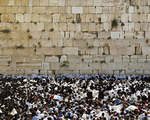 The Western Wall, or The Wailing Wall, is the most sacred site in the Jewish faith, located in the old City of Jerusalem on the western side of Temple Mount. Temple Mount, previously known as Mount Moriah, is the place where many pivotal events in Jewish history took place, according to Jewish tradition. It is the location where the first human, Adam, was created, as well as being considered as the site of the creation of the world, from the Foundation Stone at the mountain’s peak. It has been a site of Jewish prayer and pilgrimage for centuries; the earliest available source mentioning Jewish attachment to the site dates back to the 4th century. In the present era, millions of visitors are attracted to the Western Wall every year, either to pray or to watch worshippers stuff handwritten prayers on scraps of paper into cracks between the historic stones. These 2,000 year-old stones have witnessed the Jewish people’s birth, exile, and redemption – this is where the Jewish nation’s past mingles with its hopes for the future. As well as ostensibly being Judaism’s holiest site, the Western Wall also constitutes the most sensitive and contested part of Jerusalem’s Old City – it is a living testimony to the strength and resilience of the Jewish nation.
The Western Wall, or The Wailing Wall, is the most sacred site in the Jewish faith, located in the old City of Jerusalem on the western side of Temple Mount. Temple Mount, previously known as Mount Moriah, is the place where many pivotal events in Jewish history took place, according to Jewish tradition. It is the location where the first human, Adam, was created, as well as being considered as the site of the creation of the world, from the Foundation Stone at the mountain’s peak. It has been a site of Jewish prayer and pilgrimage for centuries; the earliest available source mentioning Jewish attachment to the site dates back to the 4th century. In the present era, millions of visitors are attracted to the Western Wall every year, either to pray or to watch worshippers stuff handwritten prayers on scraps of paper into cracks between the historic stones. These 2,000 year-old stones have witnessed the Jewish people’s birth, exile, and redemption – this is where the Jewish nation’s past mingles with its hopes for the future. As well as ostensibly being Judaism’s holiest site, the Western Wall also constitutes the most sensitive and contested part of Jerusalem’s Old City – it is a living testimony to the strength and resilience of the Jewish nation.

-
70 AD
COLOSSEUM
Elliptical Amphitheatre in the Centre of Rome
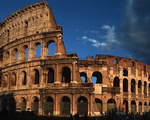 The Colosseum, whose construction was initiated by the Emperor Vespasian around 72AD, is an iconic symbol of Imperial Rome. It is, of course, one of Rome’s most famous buildings, attracting tens of thousands of tourists each year, who marvel at one of the greatest works of Roman architecture and engineering. During the time of the Roman Empire, the Colosseum was the primary stage for gladiatorial combat and public spectacle; Roman culture centred around the activities undertaken within. Aside from the gladiatorial battles that have been immortalized in modern literature and cinema, the Colosseum also housed dramas based on Classical mythology, reenactments of battles and myriad other cultural activities. In fact, the legacy of the ancient Roman culture, and the continued interest in this period of history nowadays, owes much to the enduring popularity and mystique surrounding this greatest of amphitheaters.
The Colosseum, whose construction was initiated by the Emperor Vespasian around 72AD, is an iconic symbol of Imperial Rome. It is, of course, one of Rome’s most famous buildings, attracting tens of thousands of tourists each year, who marvel at one of the greatest works of Roman architecture and engineering. During the time of the Roman Empire, the Colosseum was the primary stage for gladiatorial combat and public spectacle; Roman culture centred around the activities undertaken within. Aside from the gladiatorial battles that have been immortalized in modern literature and cinema, the Colosseum also housed dramas based on Classical mythology, reenactments of battles and myriad other cultural activities. In fact, the legacy of the ancient Roman culture, and the continued interest in this period of history nowadays, owes much to the enduring popularity and mystique surrounding this greatest of amphitheaters.

-
537 AD
AYASOFYA MUZESI
The historical Architectural Wonder of Turkey
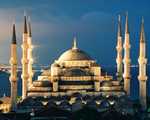 The Hagia Sophia is a prime example example of cultural diplomacy in monument form, both in terms of the nature of the building itself, and location, through history. The monument as it stands today was built as a cathedral by the Byzantine empire in 537, but transformed in to a mosque under Ottoman rule in 1453, having transferred from Eastern Orthodox status to Roman Catholic and back again beforehand. In 1935 - by the order of Atatürk, “Father of Turks” - Hagia Sophia was secularised and converted into a museum, which it remains to this day. Its diverse religious history means that this grand and beautiful monument holds great importance for people from a range of cultural backgrounds, in addition to bringing people together through its sheer aesthetic presence. Furthermore Constantinople, later Istanbul, was extremely significant for cultural diversity, particularly in the Middle Ages. Positioned geographically somewhere between Europe and the Middle East, throughout history it has been an epicentre for cultural diversity, through trade, religion and the arts. Hagia Sophia reflects this diversity, and stands as an important cultural symbol for many, particularly in its current museum form.
The Hagia Sophia is a prime example example of cultural diplomacy in monument form, both in terms of the nature of the building itself, and location, through history. The monument as it stands today was built as a cathedral by the Byzantine empire in 537, but transformed in to a mosque under Ottoman rule in 1453, having transferred from Eastern Orthodox status to Roman Catholic and back again beforehand. In 1935 - by the order of Atatürk, “Father of Turks” - Hagia Sophia was secularised and converted into a museum, which it remains to this day. Its diverse religious history means that this grand and beautiful monument holds great importance for people from a range of cultural backgrounds, in addition to bringing people together through its sheer aesthetic presence. Furthermore Constantinople, later Istanbul, was extremely significant for cultural diversity, particularly in the Middle Ages. Positioned geographically somewhere between Europe and the Middle East, throughout history it has been an epicentre for cultural diversity, through trade, religion and the arts. Hagia Sophia reflects this diversity, and stands as an important cultural symbol for many, particularly in its current museum form.

-
780 AD
MOSQUE-CATHEDRAL OF CORDOBA
The Architectural Coexistence Between Different Religions
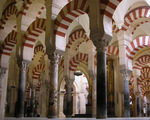 The Mesquita de Córdoba, or The Mosque-Cathedral of Córdoba, was once the greatest centre of worship in the westernmost Islamic state in the world, and is situated in a city that witnessed the dawn of Western civilization. It is a spiritual sanctuary, a holy place; truly unique in the world. Throughout its history, the Mezquita de Córdoba has oscillated between functioning as a Cathedral and a Mosque. Built initially by the Visigoths as a Catholic Christian church dedicated to Saint Vincent, the building was latterly divided between Christians and Muslims following the Islamic conquest of the Visigothic kingdom in the 8th century. The city of Córdoba was thus transformed from bustling Roman metropolis to jewel in the crown of Arabic Andalucía, and within the halls of the Mezquita aspects of religion, philosophy, anatomy, geometry, and countless other intellectual disciplines were weighed and considered, forming part of a cultural melting pot that would go on to greatly influence Western thinking and culture. After the reconquista, it was converted once more into a Catholic church. The Mezquita represents a fine example of where these disparate cultures intersected; not only living side by side, but profoundly influencing one another in terms of architecture and spirituality. In the modern era, however, Muslims are prevented from praying in the complex, and as such the Islamic Council of Spain lodged a formal request with the Vatican, a move that has been opposed by the Vatican and Spanish church authorities. The cathedral is regarded as one of the most accomplished monuments of Moorish architecture.
The Mesquita de Córdoba, or The Mosque-Cathedral of Córdoba, was once the greatest centre of worship in the westernmost Islamic state in the world, and is situated in a city that witnessed the dawn of Western civilization. It is a spiritual sanctuary, a holy place; truly unique in the world. Throughout its history, the Mezquita de Córdoba has oscillated between functioning as a Cathedral and a Mosque. Built initially by the Visigoths as a Catholic Christian church dedicated to Saint Vincent, the building was latterly divided between Christians and Muslims following the Islamic conquest of the Visigothic kingdom in the 8th century. The city of Córdoba was thus transformed from bustling Roman metropolis to jewel in the crown of Arabic Andalucía, and within the halls of the Mezquita aspects of religion, philosophy, anatomy, geometry, and countless other intellectual disciplines were weighed and considered, forming part of a cultural melting pot that would go on to greatly influence Western thinking and culture. After the reconquista, it was converted once more into a Catholic church. The Mezquita represents a fine example of where these disparate cultures intersected; not only living side by side, but profoundly influencing one another in terms of architecture and spirituality. In the modern era, however, Muslims are prevented from praying in the complex, and as such the Islamic Council of Spain lodged a formal request with the Vatican, a move that has been opposed by the Vatican and Spanish church authorities. The cathedral is regarded as one of the most accomplished monuments of Moorish architecture.

-
802 AD
ANGKOR
Hindu Archeological Temple
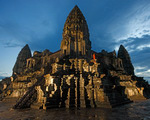 Angkor, situated in modern day Cambodia, is renowned as one of the most important archaeological sites in South-East Asia. Formerly the centre of the Khmer Kingdom, the area is now a UNESCO protected world heritage site, covering around 400km2, including the famous temples Angkor Wat and Bayon Temple, and forests. The protected area consists of more impressive monuments besides Angkor Wat, several different ancient urban plans and large water reservoirs. Angkor possesses a unique concentration of cultural and archaeological features, which testify to an exceptional civilisation. This rich cultural heritage and significance attracts a great deal of visitors to the site from across the world, keen to expand and enrich their knowledge of a vastly different culture to their own. Especially for tourists and observers from the geographical west, where perspectives of culture in South-East Asia may perhaps have been limited, Angkor Wat offers an insight into understanding the cultural history of others. Such insights have a strong relevance for cultural diplomacy today.
Angkor, situated in modern day Cambodia, is renowned as one of the most important archaeological sites in South-East Asia. Formerly the centre of the Khmer Kingdom, the area is now a UNESCO protected world heritage site, covering around 400km2, including the famous temples Angkor Wat and Bayon Temple, and forests. The protected area consists of more impressive monuments besides Angkor Wat, several different ancient urban plans and large water reservoirs. Angkor possesses a unique concentration of cultural and archaeological features, which testify to an exceptional civilisation. This rich cultural heritage and significance attracts a great deal of visitors to the site from across the world, keen to expand and enrich their knowledge of a vastly different culture to their own. Especially for tourists and observers from the geographical west, where perspectives of culture in South-East Asia may perhaps have been limited, Angkor Wat offers an insight into understanding the cultural history of others. Such insights have a strong relevance for cultural diplomacy today.

-
889 AD
ALHAMBRA
A Spanish Palace with Enormous Global Impact
 The Alhambra is a palace and fortress situated in Granada, Spain. The building was initially constructed as a small fortress in 889 and was rebuilt in the mid-11th century by its founder, Mohammed Al-Ahmar. His son Muhammed II, who continued updating the fortress, completed his work. Yusuf I, Sultan of Granada, converted the building into a royal palace in the 14th century. The Alhambra is a fantastic example of cultural diplomacy because it represents a reflection of the Moorish culture in Spain. The Moors ruled parts of Andalucía for 800 years until the late 15th century and this beautiful monument exemplifies their legacy.
Alhambra has had a huge global impact. Whilst international songs and books have been written about this fascinating palace, its architecture and design has been mathematically stimulating as the building contains nearly all of the seventeen mathematically possible wallpaper groups that are complexly symmetrical. In recognition of this importance, it became a UNESCO World Heritage Site in 1984.
The Alhambra is a palace and fortress situated in Granada, Spain. The building was initially constructed as a small fortress in 889 and was rebuilt in the mid-11th century by its founder, Mohammed Al-Ahmar. His son Muhammed II, who continued updating the fortress, completed his work. Yusuf I, Sultan of Granada, converted the building into a royal palace in the 14th century. The Alhambra is a fantastic example of cultural diplomacy because it represents a reflection of the Moorish culture in Spain. The Moors ruled parts of Andalucía for 800 years until the late 15th century and this beautiful monument exemplifies their legacy.
Alhambra has had a huge global impact. Whilst international songs and books have been written about this fascinating palace, its architecture and design has been mathematically stimulating as the building contains nearly all of the seventeen mathematically possible wallpaper groups that are complexly symmetrical. In recognition of this importance, it became a UNESCO World Heritage Site in 1984.

-
1211 AD
CATHEDRAL OF SANTIAGO DE COMPOSTELA
The End of the Journey for Pilgrims
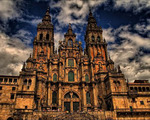 When Aymeric Picaud published the fifth chapter of his Liber Sancti Jacobi in 1140, he may have struggled to believe that his text – widely regarded as the first travel guide ever written – would still form a point of reference for pilgrims on the Camino de Santiago some nine centuries later. Santiago de Compostela Cathedral, or Catedral de Santiago de Compostela, located in Galicia in north-western Spain, is the reputed burial place of the patron saint of Spain, St. James (Santiago). For more than 1,000 years the cathedral has been a place of pilgrimage – it is estimated that a quarter of all 14th century Europeans made the hazardous and debilitating journey. Today, pilgrims come from all corners of the planet – an estimated 150,000 made the trip last year – and their reasons for undertaking the pilgrimage are as varied as their nationalities. For many, the journey is a Christian pilgrimage, while for others it is purely spiritual, often made at a difficult juncture in someone’s life. Others treat it merely as a personal challenge, an opportunity to immerse themselves in Spanish history and culture, or simply as a chance to take in some of Europe’s most spectacular scenery. Generally, the journey itself is one of transcendence – an opportunity for people of disparate cultures to gain mutual understanding and spiritual growth.
When Aymeric Picaud published the fifth chapter of his Liber Sancti Jacobi in 1140, he may have struggled to believe that his text – widely regarded as the first travel guide ever written – would still form a point of reference for pilgrims on the Camino de Santiago some nine centuries later. Santiago de Compostela Cathedral, or Catedral de Santiago de Compostela, located in Galicia in north-western Spain, is the reputed burial place of the patron saint of Spain, St. James (Santiago). For more than 1,000 years the cathedral has been a place of pilgrimage – it is estimated that a quarter of all 14th century Europeans made the hazardous and debilitating journey. Today, pilgrims come from all corners of the planet – an estimated 150,000 made the trip last year – and their reasons for undertaking the pilgrimage are as varied as their nationalities. For many, the journey is a Christian pilgrimage, while for others it is purely spiritual, often made at a difficult juncture in someone’s life. Others treat it merely as a personal challenge, an opportunity to immerse themselves in Spanish history and culture, or simply as a chance to take in some of Europe’s most spectacular scenery. Generally, the journey itself is one of transcendence – an opportunity for people of disparate cultures to gain mutual understanding and spiritual growth.

-
1504
DAVID OF MICHELANGELO
A Symbol of the Defense of Civil Liberties in the Republic of Florence
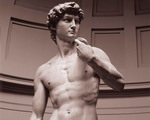 Michelangelo’s statue of David is one of the most instantly recognisable sculptures in human history. Sculpted between 1501 and 1504, David is a 5.17m statue of exceptional detail, made out of gleaming white marble. Besides holding great aesthetic value individually, it also serves as a key representation of the burgeoning Italian renaissance, although of course it is not the only monument or piece of art to hold this iconic statement. The Italian renaissance movement has been hugely pervasive in the field of art and culture and remains so to this day, not only for Italian culture specifically, but for the capabilities and expression of humankind more generally. Furthermore, David was an important figure in Florence at the time as his heroic victory over Goliath and was considered to represent the defiant defence of Florence against invaders. Beyond the religious connotation and association with Italian high culture, David also stands plainly and honestly naked, as a member of the human race. In this sense the statue of David is accessible to all cultures, not just Christian or Italian, and so draws universal interest.
Michelangelo’s statue of David is one of the most instantly recognisable sculptures in human history. Sculpted between 1501 and 1504, David is a 5.17m statue of exceptional detail, made out of gleaming white marble. Besides holding great aesthetic value individually, it also serves as a key representation of the burgeoning Italian renaissance, although of course it is not the only monument or piece of art to hold this iconic statement. The Italian renaissance movement has been hugely pervasive in the field of art and culture and remains so to this day, not only for Italian culture specifically, but for the capabilities and expression of humankind more generally. Furthermore, David was an important figure in Florence at the time as his heroic victory over Goliath and was considered to represent the defiant defence of Florence against invaders. Beyond the religious connotation and association with Italian high culture, David also stands plainly and honestly naked, as a member of the human race. In this sense the statue of David is accessible to all cultures, not just Christian or Italian, and so draws universal interest.

-
1616
SULTAN AHMET MOSQUE
The Most Popular Mosque in Istanbul
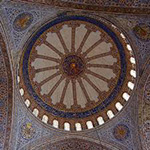 The Mosque of Sultan Ahmet I, is generally referred to as the ‘Blue Mosque’ due to its interior tiles. It is often named as the world’s most beautiful mosque due its fantastically curved exterior, and stunning domes. The mosque is still used today for religious practice however it has also become a huge tourist attraction when not closed during the daily prayer times. The mosque asks for tourists to follow traditional religious practice when entering the mosque: women must wear a head covering and all tourists must remove their shoes. Following these religious traditions allows individuals from all over the world, and from a variety of religions, to gain an understanding of Muslim religious prayer customs. The mosque has become such a popular attraction that admission is now controlled so as to preserve its sacred atmosphere. This demonstrates the interest that tourists worldwide have in learning about Muslim culture.
The Mosque of Sultan Ahmet I, is generally referred to as the ‘Blue Mosque’ due to its interior tiles. It is often named as the world’s most beautiful mosque due its fantastically curved exterior, and stunning domes. The mosque is still used today for religious practice however it has also become a huge tourist attraction when not closed during the daily prayer times. The mosque asks for tourists to follow traditional religious practice when entering the mosque: women must wear a head covering and all tourists must remove their shoes. Following these religious traditions allows individuals from all over the world, and from a variety of religions, to gain an understanding of Muslim religious prayer customs. The mosque has become such a popular attraction that admission is now controlled so as to preserve its sacred atmosphere. This demonstrates the interest that tourists worldwide have in learning about Muslim culture.

-
1788
BRANDERBURG GATE
An 18th century triumphal arch in Berlin
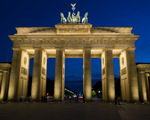 The Brandenburg Gate is one of the most renowned landmarks in Germany, symbolizing the past events in Germany and Europe. Commissioned by the King of Prussia, Frederick William II, the gate was built to signal peace soon after the Thirty Years’ war. The Brandenburg gate has lived through historical turmoil and various regimes, from that of the Third Reich to the “evil empire” of the USSR as claimed by Ronald Reagan during the Cold War. With the fall of the Berlin wall, the Brandenburg gate reopened and continues to be visited by natives and tourists alike. The key events that have occurred in German and European history make the Brandenburg gate an important place for the international community to come and show their appreciation for this emotional past. Initially built as a sign of peace, the gate represents a relationship between different nations and cultures, which has been built on over the years as various happenings have taken place. Ultimately the Brandenburg gate has provided the setting for exchanges and experiences between divergent nations, regimes, cultures and peoples and thus remains a distinctive monument in Berlin.
The Brandenburg Gate is one of the most renowned landmarks in Germany, symbolizing the past events in Germany and Europe. Commissioned by the King of Prussia, Frederick William II, the gate was built to signal peace soon after the Thirty Years’ war. The Brandenburg gate has lived through historical turmoil and various regimes, from that of the Third Reich to the “evil empire” of the USSR as claimed by Ronald Reagan during the Cold War. With the fall of the Berlin wall, the Brandenburg gate reopened and continues to be visited by natives and tourists alike. The key events that have occurred in German and European history make the Brandenburg gate an important place for the international community to come and show their appreciation for this emotional past. Initially built as a sign of peace, the gate represents a relationship between different nations and cultures, which has been built on over the years as various happenings have taken place. Ultimately the Brandenburg gate has provided the setting for exchanges and experiences between divergent nations, regimes, cultures and peoples and thus remains a distinctive monument in Berlin.

-
1882
SAGRADA FAMILIA
An Unfinished Masterpiece
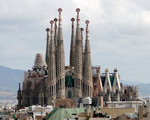 La Sagrada Família is an impressive, although incomplete, church in Barcelona designed by the famous Catalan architect Antoni Gaudí (1852–1926). Gaudí took over design and construction of the church from Francisco de Paula del Villar (1828-1901) in 1883 and continued until his death in 1926, injecting his unique style into the project. Its cultural significance, besides sheer beauty, is twofold. Firstly, it is positioned centrally in Barcelona in both a physical and iconic sense, given the notoriety of Gaudí and the level of international interest he brought to the region artistically. Along with six other of his buildings, Sagrada Família’s UNESCO World Heritage Site status is testament to Gaudí enormous influence on artistic architecture throughout the world. Furthermore, secondly, the architectural style of Sagrada Família itself demonstrates a multicultural spirit as it draws on aspects of design that are international in nature. As combination of Gothic and Art Nouveau, it represents a homogeny of cultural heritage in style, and Art Nouveau itself holds the philosophy of art as in harmony with nature, transcending national and cultural identity. This is accentuated by the fact that construction is still ongoing to this day, and therefore the architectural style is open to interpretation by the architects involved since Gaudí’s death.
La Sagrada Família is an impressive, although incomplete, church in Barcelona designed by the famous Catalan architect Antoni Gaudí (1852–1926). Gaudí took over design and construction of the church from Francisco de Paula del Villar (1828-1901) in 1883 and continued until his death in 1926, injecting his unique style into the project. Its cultural significance, besides sheer beauty, is twofold. Firstly, it is positioned centrally in Barcelona in both a physical and iconic sense, given the notoriety of Gaudí and the level of international interest he brought to the region artistically. Along with six other of his buildings, Sagrada Família’s UNESCO World Heritage Site status is testament to Gaudí enormous influence on artistic architecture throughout the world. Furthermore, secondly, the architectural style of Sagrada Família itself demonstrates a multicultural spirit as it draws on aspects of design that are international in nature. As combination of Gothic and Art Nouveau, it represents a homogeny of cultural heritage in style, and Art Nouveau itself holds the philosophy of art as in harmony with nature, transcending national and cultural identity. This is accentuated by the fact that construction is still ongoing to this day, and therefore the architectural style is open to interpretation by the architects involved since Gaudí’s death.

-
1886
STATUE OF LIBERTY
Gift to United States from the People of France
 The Statue of Liberty, designed by Frenchman Frédéric Auguste Bartholdi, was given as a gift to the USA on October 28th, 1886. The statue represents Libertas, the Roman goddess of freedom. She bears a torch, a tablet with the date of the American Declaration of Independence, while a broken chain lies at her feet. The statue has been a tourist destination, a backdrop for political addresses and constitutional amendments, and served a multitude of other cultural functions in its 128-year stay on Liberty Island. The timing of the gift was also of great significance, falling on the centennial anniversary of American independence, and as such the statue came to serve as a monument to many different things: political cooperation between France and America; the end of slavery in America; American national unity; immigration and economic opportunity; political liberty and freedom around the globe. The gift also came at an important time for inter-cultural relations on a global scale – many World Fairs and International Exhibitions were held in the late 19th century to promote international trade and cultural exchange, a time at which the potential of international cooperation and mutual understanding were becoming increasingly apparent. However, the statue has not only come to represent political cooperation between France and America, but also – by virtue of its setting in New York harbor – served as a beacon for immigrants seeking economic opportunity and freedom from persecution in the United States. This meaning intensified in the aftermath of the Second World War, with the creation of the National Museum of Immigration at the base of the statue in 1972.
The Statue of Liberty, designed by Frenchman Frédéric Auguste Bartholdi, was given as a gift to the USA on October 28th, 1886. The statue represents Libertas, the Roman goddess of freedom. She bears a torch, a tablet with the date of the American Declaration of Independence, while a broken chain lies at her feet. The statue has been a tourist destination, a backdrop for political addresses and constitutional amendments, and served a multitude of other cultural functions in its 128-year stay on Liberty Island. The timing of the gift was also of great significance, falling on the centennial anniversary of American independence, and as such the statue came to serve as a monument to many different things: political cooperation between France and America; the end of slavery in America; American national unity; immigration and economic opportunity; political liberty and freedom around the globe. The gift also came at an important time for inter-cultural relations on a global scale – many World Fairs and International Exhibitions were held in the late 19th century to promote international trade and cultural exchange, a time at which the potential of international cooperation and mutual understanding were becoming increasingly apparent. However, the statue has not only come to represent political cooperation between France and America, but also – by virtue of its setting in New York harbor – served as a beacon for immigrants seeking economic opportunity and freedom from persecution in the United States. This meaning intensified in the aftermath of the Second World War, with the creation of the National Museum of Immigration at the base of the statue in 1972.

-
1889
EIFFEL TOWER
An Iron Tower on the Champ de Mars in Paris
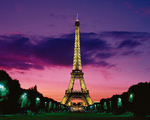 When one thinks of Paris, the image of the Eiffel Tower tends to immediately spring to mind, although the city is brimming with famous buildings and art. It is an icon not just of a feat of engineering, design or Paris itself, but of France and French culture more generally. Named after the engineer Gustave Eiffel, the 324m iron lattice structure was the tallest building in the world from 1889 to 1930. In addition, it is the most visited paid monument in the world, with over seven millions visitors per year. Therefore it is plain to see the invaluable and far-reaching role it can play in French cultural diplomacy, where it is able to serve as a reference point for French culture for people from all corners of the earth.
When one thinks of Paris, the image of the Eiffel Tower tends to immediately spring to mind, although the city is brimming with famous buildings and art. It is an icon not just of a feat of engineering, design or Paris itself, but of France and French culture more generally. Named after the engineer Gustave Eiffel, the 324m iron lattice structure was the tallest building in the world from 1889 to 1930. In addition, it is the most visited paid monument in the world, with over seven millions visitors per year. Therefore it is plain to see the invaluable and far-reaching role it can play in French cultural diplomacy, where it is able to serve as a reference point for French culture for people from all corners of the earth.

-
1894/2000
CHAPEL OF RECONCILIATION
A Chapel to Ensure that we Never Forget the Berlin Wall
 The Chapel of Reconciliation is part of the Berlin Wall Memorial ensemble and is a place for reflection and prayer. With the construction of the Berlin Wall, the Chapel was thrown into “no man’s land” and so the congregation were no longer able to visit this beautiful neo-Gothic building. In 1985, the GDR ordered the church to be destroyed.
Eleven years after the fall of the Berlin Wall, Berlin architects Sassenroth and Reitermann redesigned the Chapel of Reconciliation and in November 2000, the new building was declared open. Volunteers from around the world helped to restore this monumental Chapel. The Chapel regularly recalls the stories of individuals who died at the Berlin Wall and so puts emphasis on remembering this difficult period in Berlin history. Furthermore, a German charity, Open Houses, organises for volunteers from around the world to work at the chapel. The charity has highlighted that the monument should be a place for young people from different nations to meet and learn from one another.
The Chapel of Reconciliation is part of the Berlin Wall Memorial ensemble and is a place for reflection and prayer. With the construction of the Berlin Wall, the Chapel was thrown into “no man’s land” and so the congregation were no longer able to visit this beautiful neo-Gothic building. In 1985, the GDR ordered the church to be destroyed.
Eleven years after the fall of the Berlin Wall, Berlin architects Sassenroth and Reitermann redesigned the Chapel of Reconciliation and in November 2000, the new building was declared open. Volunteers from around the world helped to restore this monumental Chapel. The Chapel regularly recalls the stories of individuals who died at the Berlin Wall and so puts emphasis on remembering this difficult period in Berlin history. Furthermore, a German charity, Open Houses, organises for volunteers from around the world to work at the chapel. The charity has highlighted that the monument should be a place for young people from different nations to meet and learn from one another.

-
1903
TRIANGLE OF RELIGIOUS TOLERANCE
A Church, a Mosque and a Synagogue – in religious harmony
 The Capital of Bulgaria, Sofia, is widely recognized for the so-called ‘Triangle of Religious Tolerance’. Sveta Nedelya Church, Banya Bashi Mosque and Sofia Synagogue are placed just metres from each other.
Banya Bashi Mosque was opened in 1576 and is the only working mosque in Sofia. On Fridays the service is broadcast on a loudspeaker for those who are unable to fit into the 700 person capacity building. The mosque is a reminder of the Ottoman rule of Bulgaria.
Sveta Nedelya Church was previously known as Holly King (Sveti kral) because the remains of the Serbian King Stephan Urosh II. The beautiful wood carvings in the church date back to 1865.
Sofia Synagogue has symbolized the Jewish community of Bulgaria for almost a century. It is the second largest Sephardic (Spanish-Jewish) synagogue in Europe. The synagogue completed the Triangle of Religious Tolerance when it was declared open in 1909.
The placing of these three religious buildings is significant as they stress an understanding and acceptance of each religion. Bulgaria has stressed that children from different religions should grow up together and study each other’s religion in order to ensure that nobody can make them religious enemies in their adult life.
The Capital of Bulgaria, Sofia, is widely recognized for the so-called ‘Triangle of Religious Tolerance’. Sveta Nedelya Church, Banya Bashi Mosque and Sofia Synagogue are placed just metres from each other.
Banya Bashi Mosque was opened in 1576 and is the only working mosque in Sofia. On Fridays the service is broadcast on a loudspeaker for those who are unable to fit into the 700 person capacity building. The mosque is a reminder of the Ottoman rule of Bulgaria.
Sveta Nedelya Church was previously known as Holly King (Sveti kral) because the remains of the Serbian King Stephan Urosh II. The beautiful wood carvings in the church date back to 1865.
Sofia Synagogue has symbolized the Jewish community of Bulgaria for almost a century. It is the second largest Sephardic (Spanish-Jewish) synagogue in Europe. The synagogue completed the Triangle of Religious Tolerance when it was declared open in 1909.
The placing of these three religious buildings is significant as they stress an understanding and acceptance of each religion. Bulgaria has stressed that children from different religions should grow up together and study each other’s religion in order to ensure that nobody can make them religious enemies in their adult life.

-
1959
LET US BEAT SWORDS INTO PLOWSHARES
A Statue for Promotion of a Peaceful Slogan Donated by the Soviet Union to the United Nations
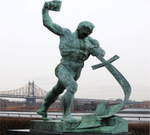 This bronze statue, Let Us Beat Swords into Ploughshares, was donated by the Soviet Union to the United Nations in 1956. Sculpted by Evgeniy Vuchetich, it symbolises the desire to end human conflict by converting implements of death into ones of productivity and peace. With this spirit, it depicts the figure of a man preparing to strike a sword with a hammer as he converts it a plough blade. The phrase “swords to ploughshares” originates from the Book of Isaiah, which introduced the concept of converting military weapons into civilian tools. Clearly, this was a gift of monumental significance given the political situation of the time. With relations between the capitalist ‘West’ and communist ‘East’ growing increasingly more tense across the world, the statue represents a remarkable message of peace from beyond the Iron Curtain. In a period dominated by international politics of division, this act of cultural diplomacy displays humanity and the importance of art and soft power.
This bronze statue, Let Us Beat Swords into Ploughshares, was donated by the Soviet Union to the United Nations in 1956. Sculpted by Evgeniy Vuchetich, it symbolises the desire to end human conflict by converting implements of death into ones of productivity and peace. With this spirit, it depicts the figure of a man preparing to strike a sword with a hammer as he converts it a plough blade. The phrase “swords to ploughshares” originates from the Book of Isaiah, which introduced the concept of converting military weapons into civilian tools. Clearly, this was a gift of monumental significance given the political situation of the time. With relations between the capitalist ‘West’ and communist ‘East’ growing increasingly more tense across the world, the statue represents a remarkable message of peace from beyond the Iron Curtain. In a period dominated by international politics of division, this act of cultural diplomacy displays humanity and the importance of art and soft power.

-
1985
SYMBOL OF MULTICULTURALISM
Monument to Multiculturalism by Francesco Perilli
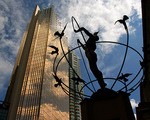 Designed by Italian artist Francesco Perilli, the Monument to Multiculturalism is located in Toronto, Canada in front of Union Station. It was commissioned by the Congress of Italian Canadians and was unveiled on 1 July 1985 by the then Mayor of Toronto, in honour of multiculturalism in Toronto. In the shape of the globe, the monument represents the creation of a new world, demonstrating how individuals and communities from around the world have made Toronto and Canada their home. The base of the sculpture is engraved with script from the United Nations Covenant on Civil and Political Rights, which advocates the freedoms individuals from minority groups have; despite ones ethnic, religious or linguistic background, one shall not be denied the right to express and enjoy their culture, practice their religion or speak their language. Below an official statement on multiculturalism is inscribed which appreciates that there is no single culture in Canada and there is no superior citizen or group of citizens, thus everyone should be treated fairly and equally. The message advocated by this monument is locally, nationally and internationally appreciated and is important in encouraging the mantra that everyone is equal regardless of their cultural and religious context, something that is all to often forgotten. Thus this sculpture is significant in promoting multiculturalism and an appreciation and understanding of the various backgrounds of individuals within a community.
Designed by Italian artist Francesco Perilli, the Monument to Multiculturalism is located in Toronto, Canada in front of Union Station. It was commissioned by the Congress of Italian Canadians and was unveiled on 1 July 1985 by the then Mayor of Toronto, in honour of multiculturalism in Toronto. In the shape of the globe, the monument represents the creation of a new world, demonstrating how individuals and communities from around the world have made Toronto and Canada their home. The base of the sculpture is engraved with script from the United Nations Covenant on Civil and Political Rights, which advocates the freedoms individuals from minority groups have; despite ones ethnic, religious or linguistic background, one shall not be denied the right to express and enjoy their culture, practice their religion or speak their language. Below an official statement on multiculturalism is inscribed which appreciates that there is no single culture in Canada and there is no superior citizen or group of citizens, thus everyone should be treated fairly and equally. The message advocated by this monument is locally, nationally and internationally appreciated and is important in encouraging the mantra that everyone is equal regardless of their cultural and religious context, something that is all to often forgotten. Thus this sculpture is significant in promoting multiculturalism and an appreciation and understanding of the various backgrounds of individuals within a community.

-
1988
KNOTTED GUN
A Symbol of Non-Violence Outside the United Nations Headquarter
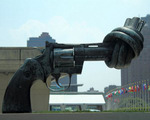 The Non-violence sculpture, also known as the knotted gun was designed as a tribute to John Lennon after death. John Lennon is renowned for his advocation for peace and harmony; take his song Imagine - “you make say I’m a dreamer, but I’m not the only one, I hope some day you will join us and the world will live as one.” Ultimately this message encourages cultural diplomacy and the need for peaceful coexistence, cooperation rather than violence and victory. The sculpture is tribute to what Lennon stood for as well as the need for non-violence, it is symbolically placed in New York at the plaza at the entrance to the United Nations Building. The decision to place the sculpture at the UN is a message in itself, as essentially it represents an acceptance of the sculpture and the idea behind it by the international community, in the form of the UN. Kofi Annan claimed that the sculpture has “enriched the consciousness of humanity” by asking for peace. The creation of the Knotted gun was followed by a series of replicas; for instance Cape Town and Beijing. Essentially the sculpture promotes the dismantling of hatred and hostility not only between nations and cultures but amongst humankind.
The Non-violence sculpture, also known as the knotted gun was designed as a tribute to John Lennon after death. John Lennon is renowned for his advocation for peace and harmony; take his song Imagine - “you make say I’m a dreamer, but I’m not the only one, I hope some day you will join us and the world will live as one.” Ultimately this message encourages cultural diplomacy and the need for peaceful coexistence, cooperation rather than violence and victory. The sculpture is tribute to what Lennon stood for as well as the need for non-violence, it is symbolically placed in New York at the plaza at the entrance to the United Nations Building. The decision to place the sculpture at the UN is a message in itself, as essentially it represents an acceptance of the sculpture and the idea behind it by the international community, in the form of the UN. Kofi Annan claimed that the sculpture has “enriched the consciousness of humanity” by asking for peace. The creation of the Knotted gun was followed by a series of replicas; for instance Cape Town and Beijing. Essentially the sculpture promotes the dismantling of hatred and hostility not only between nations and cultures but amongst humankind.

-
1990
EAST SIDE GALLERY
Gallery Created from the Berlin Wall
 The East Side Gallery in Berlin is an open air gallery, which has been created from 1.3km of the Berlin Wall. This is the longest part of the Berlin Wall that still exists and is located on Mühlenstraße in Friedrichshain-Kreuzberg. The gallery is located by the East Berlin border and was painted after the fall of the Berlin Wall. Various paintings were created by artists on a section of the Berlin Wall, the different styles of art combine the work of 118 artists from 21 different countries, and is full of different styles, combining both old and new art on the original remnants of the Wall. Supposedly there are 106 paintings, which makes the East Side Gallery the largest open air gallery in the world. In keeping with the artistic forms of film and media, the East Side Gallery provides a vibrant and visual memorial for the freedom that came with the fall of the Wall. It is an accumulation of stories, emotions and responses to the history and politics of the Berlin Wall, which had an overwhelming impact on people from all over the world. Evidently the Gallery is a symbol for cultural diplomacy, because of the fact that the canvas for the artwork; the Berlin Wall, was the centre of the Cold-War confrontation between the two superpowers of the world at the time; the United States of America and the USSR. Not only did Berlin become a point of confrontation between two centres of power who were competing for control of Europe, it also became a point of confrontation between two ideological systems and essentially different societies, cultures and peoples. The fall of the Berlin Wall signaled the start of freedom and cultural exchange, thus the East Side Gallery represents the commemoration of past events by different communities.
The East Side Gallery in Berlin is an open air gallery, which has been created from 1.3km of the Berlin Wall. This is the longest part of the Berlin Wall that still exists and is located on Mühlenstraße in Friedrichshain-Kreuzberg. The gallery is located by the East Berlin border and was painted after the fall of the Berlin Wall. Various paintings were created by artists on a section of the Berlin Wall, the different styles of art combine the work of 118 artists from 21 different countries, and is full of different styles, combining both old and new art on the original remnants of the Wall. Supposedly there are 106 paintings, which makes the East Side Gallery the largest open air gallery in the world. In keeping with the artistic forms of film and media, the East Side Gallery provides a vibrant and visual memorial for the freedom that came with the fall of the Wall. It is an accumulation of stories, emotions and responses to the history and politics of the Berlin Wall, which had an overwhelming impact on people from all over the world. Evidently the Gallery is a symbol for cultural diplomacy, because of the fact that the canvas for the artwork; the Berlin Wall, was the centre of the Cold-War confrontation between the two superpowers of the world at the time; the United States of America and the USSR. Not only did Berlin become a point of confrontation between two centres of power who were competing for control of Europe, it also became a point of confrontation between two ideological systems and essentially different societies, cultures and peoples. The fall of the Berlin Wall signaled the start of freedom and cultural exchange, thus the East Side Gallery represents the commemoration of past events by different communities.

-
2000
THE TREE OF PEACE
Building Bridges Between Palestinians and Israelis
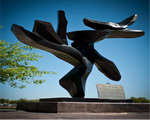 Hedva Ser, a renowned French artist who was named Artist for Peace in 2011 by UNESCO (United Nations Educational, Scientific and Cultural Organization) designed the Tree of Peace. She is a committed peace promoter and according to Ser the Tree of Peace was created to “build bridges between Palestinians and Israelis through science, education and the arts.” The sculpture has been placed in various locations such as the Hebrew University in Jerusalem and at the Al Quds University in Palestine. The growing conflict between Palestine and Israel has caused much tragedy and has catalysed an international debate between different countries and communities. Through the creation of the sculpture she is encouraging various people to think about the issue of Palestine and Israel and is spreading her personal ideals of peace and harmony. Whilst it is inevitable that counter arguments and opinions will continue to exist, the creation of this sculpture by Ser is significant in bringing the issue to surface and advocating cultural diplomacy by creating a dialogue and an exchange of ideas.
Hedva Ser, a renowned French artist who was named Artist for Peace in 2011 by UNESCO (United Nations Educational, Scientific and Cultural Organization) designed the Tree of Peace. She is a committed peace promoter and according to Ser the Tree of Peace was created to “build bridges between Palestinians and Israelis through science, education and the arts.” The sculpture has been placed in various locations such as the Hebrew University in Jerusalem and at the Al Quds University in Palestine. The growing conflict between Palestine and Israel has caused much tragedy and has catalysed an international debate between different countries and communities. Through the creation of the sculpture she is encouraging various people to think about the issue of Palestine and Israel and is spreading her personal ideals of peace and harmony. Whilst it is inevitable that counter arguments and opinions will continue to exist, the creation of this sculpture by Ser is significant in bringing the issue to surface and advocating cultural diplomacy by creating a dialogue and an exchange of ideas.

-
2001
UNITED BUDDY BEARS
International Art Exhibition with more than 140 Fiberglass Bears
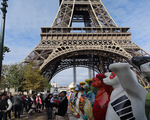 The United Buddy Bears, created in 2002, is an exhibition that includes over 140 fiberglass bears that stand hand in hand in a circle in Berlin. Each bear is designed by an artist chosen from each individual country, in order to ensure that the diversity of the various cultures across the globe are reflected. The circle of bears stand next to the motto; “we have to get to know each other better, it makes us understand one another better, trust each other more, and live together more peacefully,” which has been accepted by the 140+ countries. Originally displayed in Berlin, the enormous success of the exhibition led to the creation of a new circle in 2003 for a global tour; some of the countries include Turkey, Japan, Australia, India, even North Korea and many more. This exhibition showcases the need for peaceful coexistence and an international understanding of nations, cultures and religions; a message that has been recognised by various governments, organisations, politicians amongst the international community. The concept behind the United Buddy Bears is optimistic and appreciates multiculturalism and the need to harmonize as an international community.
The United Buddy Bears, created in 2002, is an exhibition that includes over 140 fiberglass bears that stand hand in hand in a circle in Berlin. Each bear is designed by an artist chosen from each individual country, in order to ensure that the diversity of the various cultures across the globe are reflected. The circle of bears stand next to the motto; “we have to get to know each other better, it makes us understand one another better, trust each other more, and live together more peacefully,” which has been accepted by the 140+ countries. Originally displayed in Berlin, the enormous success of the exhibition led to the creation of a new circle in 2003 for a global tour; some of the countries include Turkey, Japan, Australia, India, even North Korea and many more. This exhibition showcases the need for peaceful coexistence and an international understanding of nations, cultures and religions; a message that has been recognised by various governments, organisations, politicians amongst the international community. The concept behind the United Buddy Bears is optimistic and appreciates multiculturalism and the need to harmonize as an international community.

-
2004
STARI MOST
Reconstruction of a Cultural Emblem by Multinational Coalition
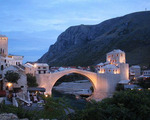 The Old Bridge is the name for the symbolic bridge that stands in the city of Mostar in Bosnia. Built by Suleiman the Magnificent of the Ottoman Empire, the Old Bridge represents past events and is a universal symbol for the coexistence of communities from diverse cultural, ethnic and religious backgrounds. The landmark faced destruction when it fell into the River Neretva during the Croat-Bosniak War from 1992-1994. With the destruction of the bridge came the destruction of memories and histories, it did however also bring the attention of the world to Mostar and the bridge. Today the bridge stands as a reconstructed replica of the original bridge, often referred to as the “New Old Bridge.” Attracting many travelers, it underlines the efforts for peace and cooperation in the face of tragedy. Mostar was the most divided town in Bosnia and thus the bridge is key in representing the identity of the city and its people before, during and after the war. The New Old Bridge is now a symbol of Mostar’s multicultural history and the division of the city, often recognised as a metaphor for the bridge between the Christian and Muslim sides of the city. It also represents an important message for the future; as the New Old Bridge no longer joins together, it essentially has a different metaphor; hatred and hostility leads nowhere.
The Old Bridge is the name for the symbolic bridge that stands in the city of Mostar in Bosnia. Built by Suleiman the Magnificent of the Ottoman Empire, the Old Bridge represents past events and is a universal symbol for the coexistence of communities from diverse cultural, ethnic and religious backgrounds. The landmark faced destruction when it fell into the River Neretva during the Croat-Bosniak War from 1992-1994. With the destruction of the bridge came the destruction of memories and histories, it did however also bring the attention of the world to Mostar and the bridge. Today the bridge stands as a reconstructed replica of the original bridge, often referred to as the “New Old Bridge.” Attracting many travelers, it underlines the efforts for peace and cooperation in the face of tragedy. Mostar was the most divided town in Bosnia and thus the bridge is key in representing the identity of the city and its people before, during and after the war. The New Old Bridge is now a symbol of Mostar’s multicultural history and the division of the city, often recognised as a metaphor for the bridge between the Christian and Muslim sides of the city. It also represents an important message for the future; as the New Old Bridge no longer joins together, it essentially has a different metaphor; hatred and hostility leads nowhere.

-
2013
STATUE OF NELSON
Bronze Statue of Nelson Mandela in Pretoria
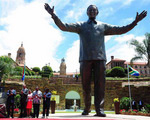 Following the death of Nelson Mandela, a bronze monument dedicated to the former President was built. Nelson Mandela was and will continued to be remember as an icon; famously for his work against inequality and racism under the apartheid in South Africa, but also poverty and various other prejudices. This monument credits the person Mandela was and what he stood for. He advocated fundamental human rights and promoted equality; ideals appreciated throughout the international community. The various global campaigns for his release during his imprisonment exemplify this; for instance the writing of songs and the conduction of concerts. He saw the inside of a prison cell for 27 years and upon his release he was greeted as a hero and became President. During his presidency he focused on bringing people of different races together and whilst inequality and the abuse of human rights continues to exist in numerous nations, this monument represents Mandela’s accomplishments and symbolizes peace and unity not only in South Africa but across the world.
Following the death of Nelson Mandela, a bronze monument dedicated to the former President was built. Nelson Mandela was and will continued to be remember as an icon; famously for his work against inequality and racism under the apartheid in South Africa, but also poverty and various other prejudices. This monument credits the person Mandela was and what he stood for. He advocated fundamental human rights and promoted equality; ideals appreciated throughout the international community. The various global campaigns for his release during his imprisonment exemplify this; for instance the writing of songs and the conduction of concerts. He saw the inside of a prison cell for 27 years and upon his release he was greeted as a hero and became President. During his presidency he focused on bringing people of different races together and whilst inequality and the abuse of human rights continues to exist in numerous nations, this monument represents Mandela’s accomplishments and symbolizes peace and unity not only in South Africa but across the world.



